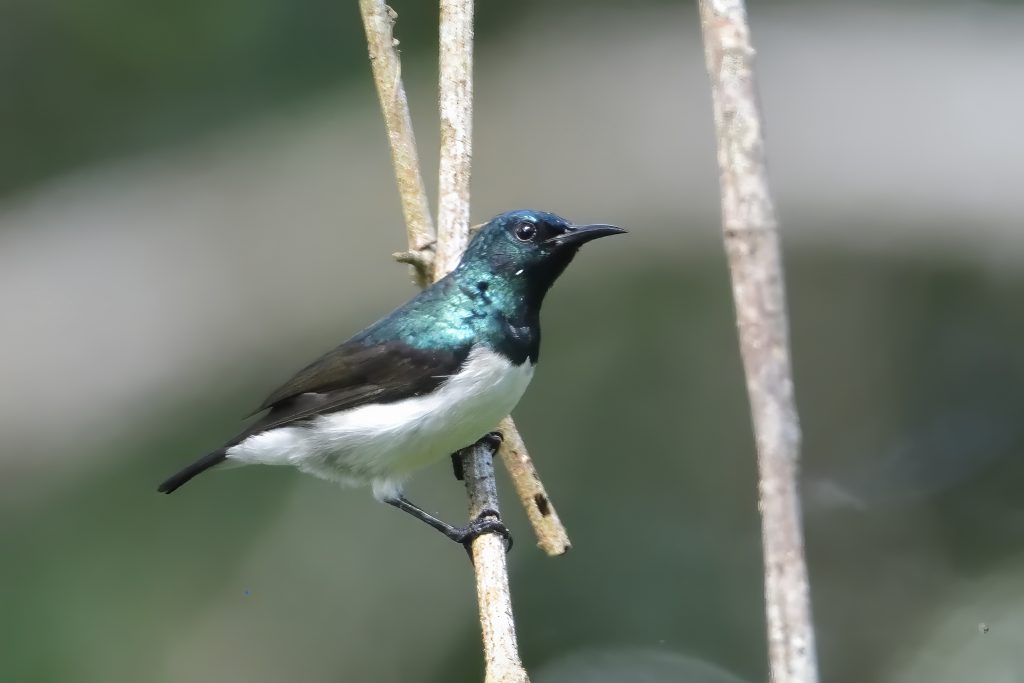
Day 1, Tuesday May 2: Kiligolf via Kilimanjaro International Airport to Amani Forest, East Usambara
I knew this was going to be a very different trip to what I usually do. My friend, a professor from Denmark is a researcher and was primarily interested in sound recordings of 7 birds on this long trip.
He landed early with Quatar and we drove straight to Amani HQ in East Usambara, We managed to do a little afternoon birding and registered th following birds: Green Barbet, Silvery-cheeked Hornbill, Olive Sunbird, Lanner Falcon, African Palm Swift and Little Swift.
No pictures from day 1
Day 2, Wednesday May 3: Amani Forest
Martin took us to a spot I had never been for my friend to record the Tanzanian Illadopsis. On the way we registered amongst others the following birds: Red-faced Cisticola, Tambourine Dove, Little Greenbul, Evergreen Forest Warbler, Waller´s Starling, Yellow-streaked Greenbul, Red-tailed Ant Thrush, Lowland Tiny Greenbul, White-chested Alethe, Stripe-faced Greenbul, Common Square-tailed Drongo, Shelley´s Greenbul, Tanzania Illadopsis, Sharpe´s Akalat, Yellow-throated Woodland Warbler, Fischer´s Turaco, Black-headed Apalis, Green-headed Oriole, Placid Greenbul, Black-fronted Bushshrike, Forest Batis, Buff-spotted Flufftail, White-tailed Crested Flycatcher and Narina Trogon. We were now out of the forest and my friend had got plenty of recordings of his target in the forest: Tanzania Illadopsis. We went back to the car and up another path in search of Amani Sunbird (my friends second target). We recorded White-browed Coucal, Collared Sunbird, Spectackled Weaver and Banded Green Sunbird. We decided to go to another spot in search of the Amani Sunbird. Here are some of the birds we recorded; Southern Citril, Black Saw-wing, Red-backed Mannikin, Yellow-bellied Waxbill, Moustached Tinkerbird, Southern Banded Snake Eagle, Amani Sunbird (no recording), Purple-banded Sunbird, African Dusky Flycatcher, Southern Yellow White-eye, Uluguru Violet-backed Sunbird, Crowned Eagle and Grey-backed Camaroptera. We decided to try in the botanical garden before lunch and recorded the following species: Rock Martin, Scarlet-chested Sunbird, Speckled Mousebird and East Coast Boubou. We returned to camp for lunch and little rest. We returned to the botanical garden after lunch and added Brown-hooded Kingfisher, Pale Batis, Mosque Swallow, White-eared Barbet, Mountain Buzzard and Amethyst Sunbird. We returned to camp, freshened up, had dinner and went to bed early.
Some pictures from Day 2:
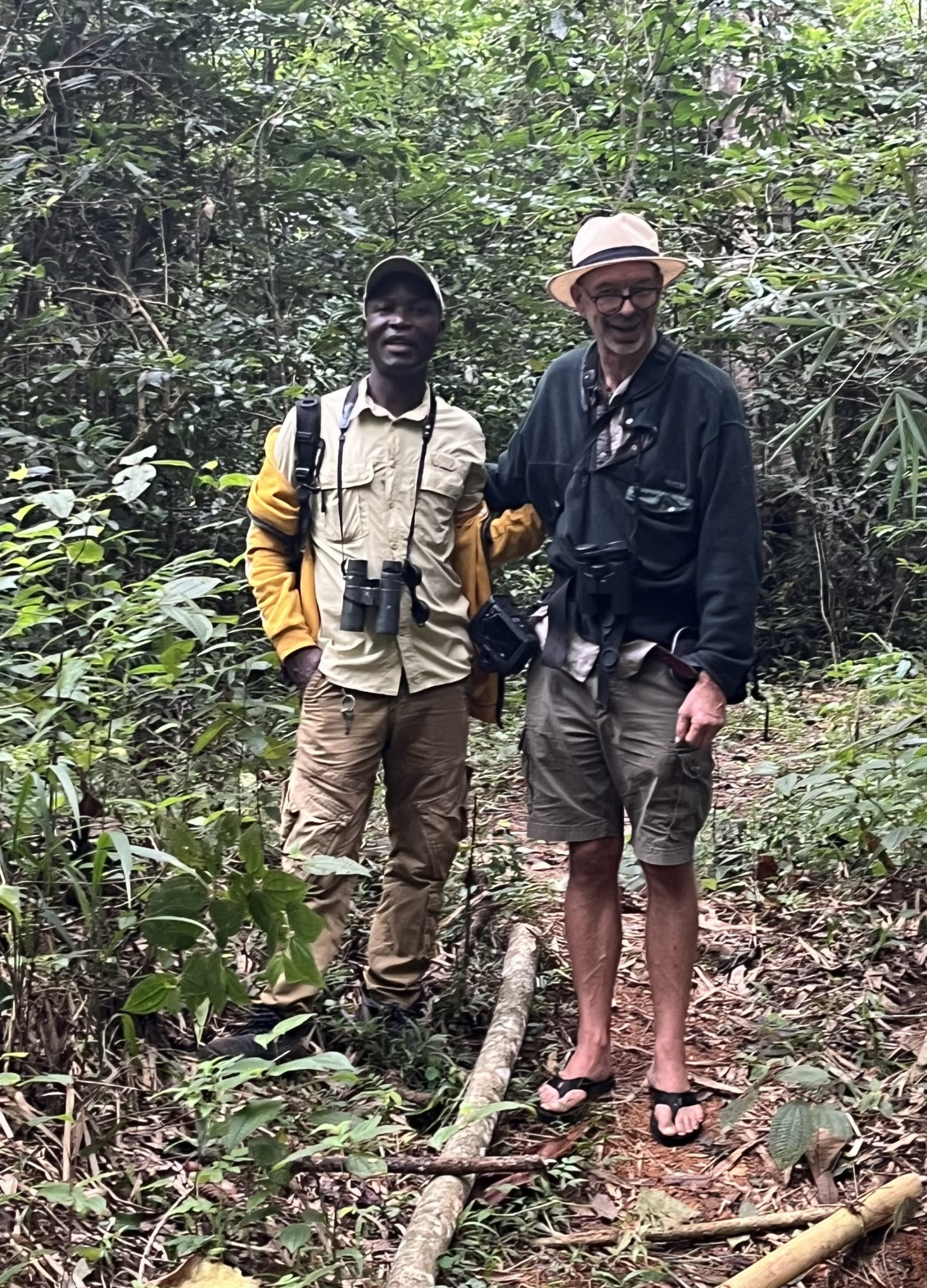
Martin and I on the way out of the forest after a successful hunt for Tanzanian Illadopsis

Green Barbet, Stactolaema olivacea
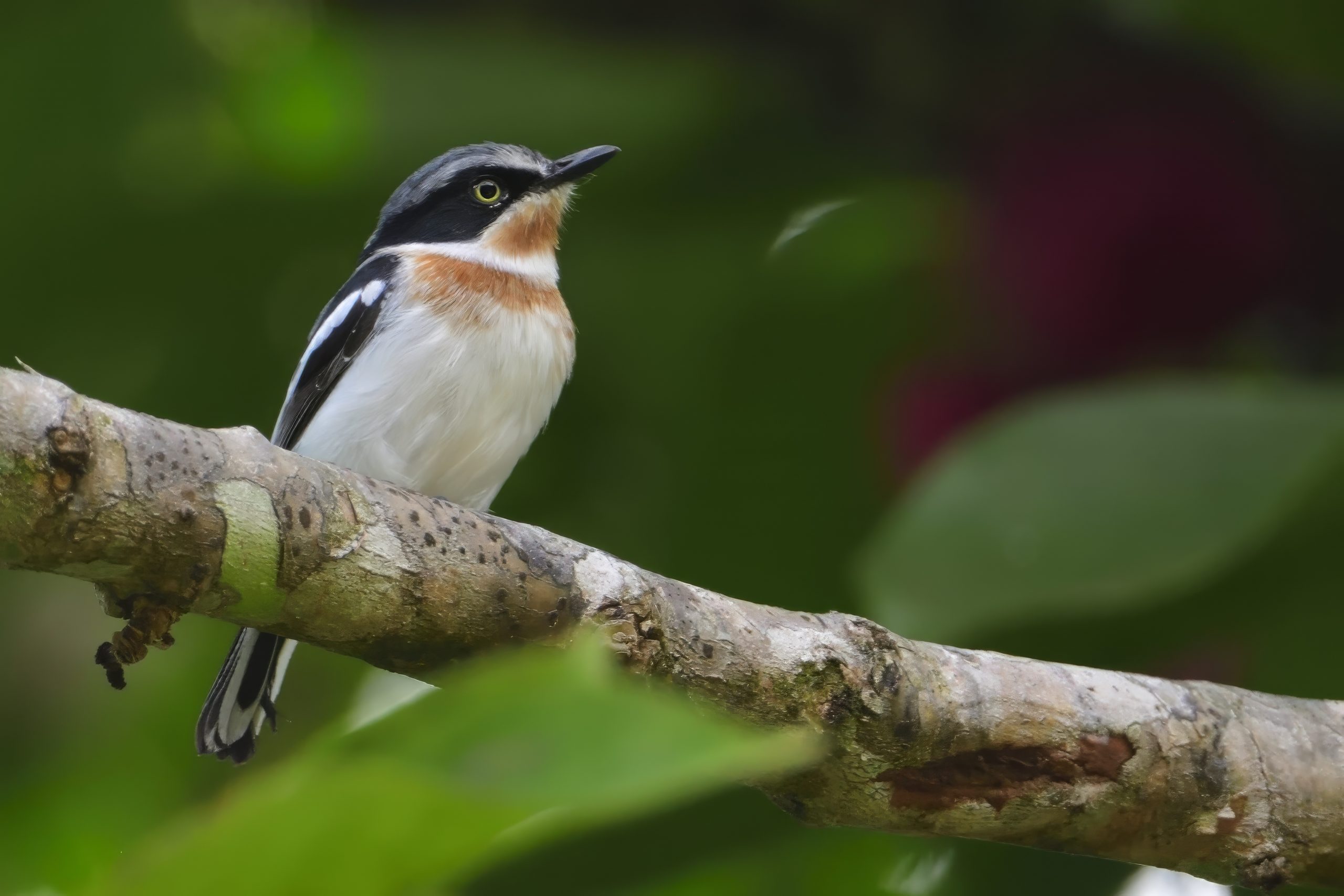
Pale Batis (female), Batis soror
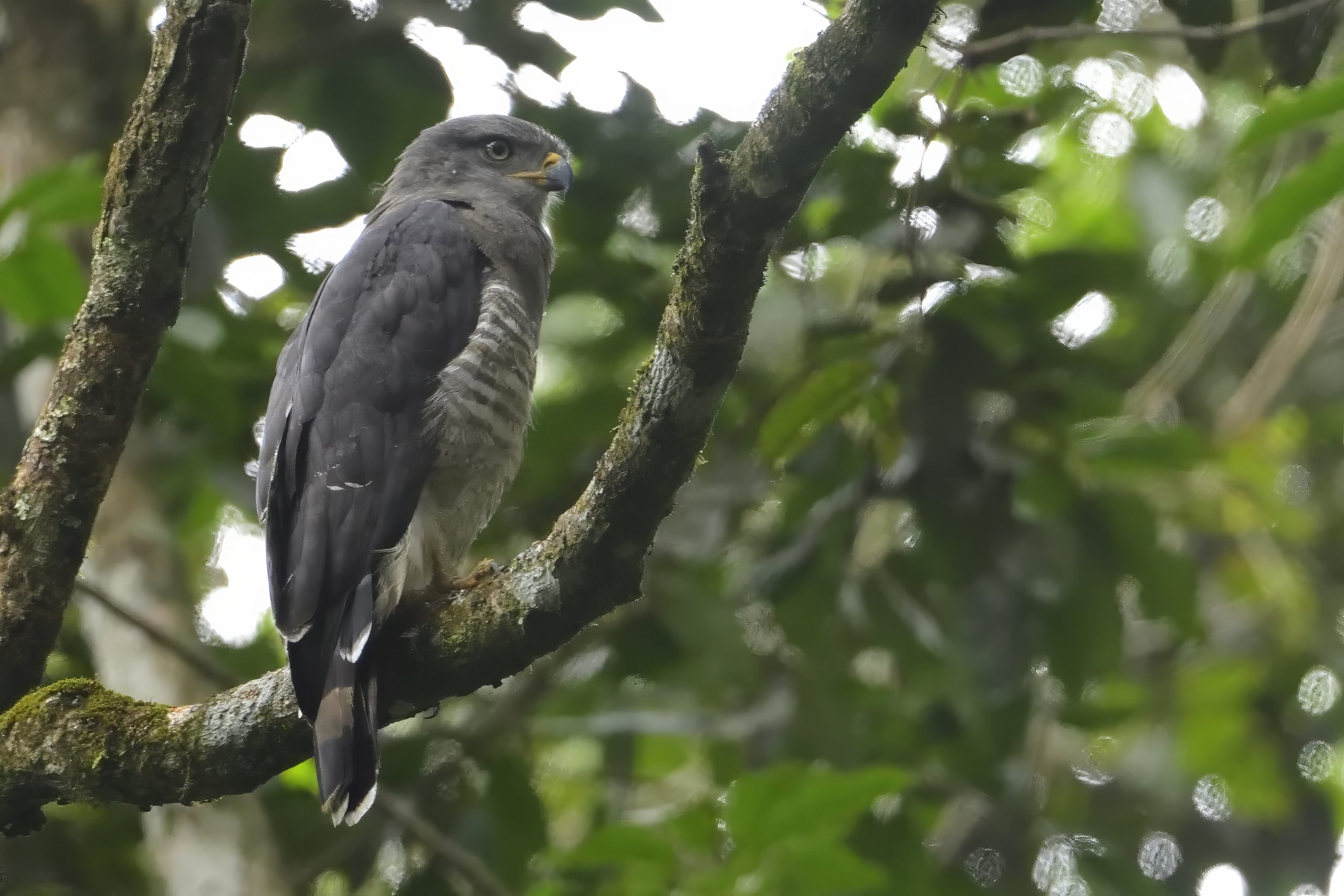
Southern Banded Snake Eagle, Circaetus fasciolatus
Day 3, Thursday, May 4: Amani Forest
We headed back to the site for the Amani Sunbird We picked up a Montane Nightjar on the way. We saw a few Amani Sunbirds, but no recording. I added African Stonechat, Trumpeter Hornbill and Common Waxbill to the list, but otherwise dead. We went back for lunch and I photographed an Olive Sunbird in the garden. We went back to the same spot in the afternoon and my friend finally got a recording of the Amani Sunbird. We also added Klaas´s Cuckoo and Brown-crowned Tchagra to our list. We returned to camp had dinner and retired early to bed.

African Stonechat, Saxicola torquatus

Sound of Music anyone?

Olive Sunbird, Cyanomitra olivacea
Day 4, Friday, May 5: Amani HQ to Zigi guest house
Same routine, hunting at the same place for Amani Sunbird. I just walked another way and took pictures of some more or less common birds. Then we moved to the botanical garden. I managed a few pictures and we could hear Amani Sunbird singing in the distance. We had lunch and drove to Zigi forest. Here are some of the new birds we added: Red-throated Twinspot, Blue-mantled Crested Flycatcher, Little Spotted and Mombasa Woodpecker, Yellow-rumped Tinkerbird, Plain-backed Sunbird, African Paradise Flycatcher and Fischer´s Greenbul.
We returned to the guesthouse and had a nice dinner before we retired to bed.
Some pictures from Day 4

Fischer´s Turaco, Tauraco fischeri, Endemic to Coastal East Africa

Southern Citril, Chritagra hyposticta

Tawny-flanked Prinia, Prinia subflava

Yellow-streaked Greenbul, Phyllastrphus flavostriatus
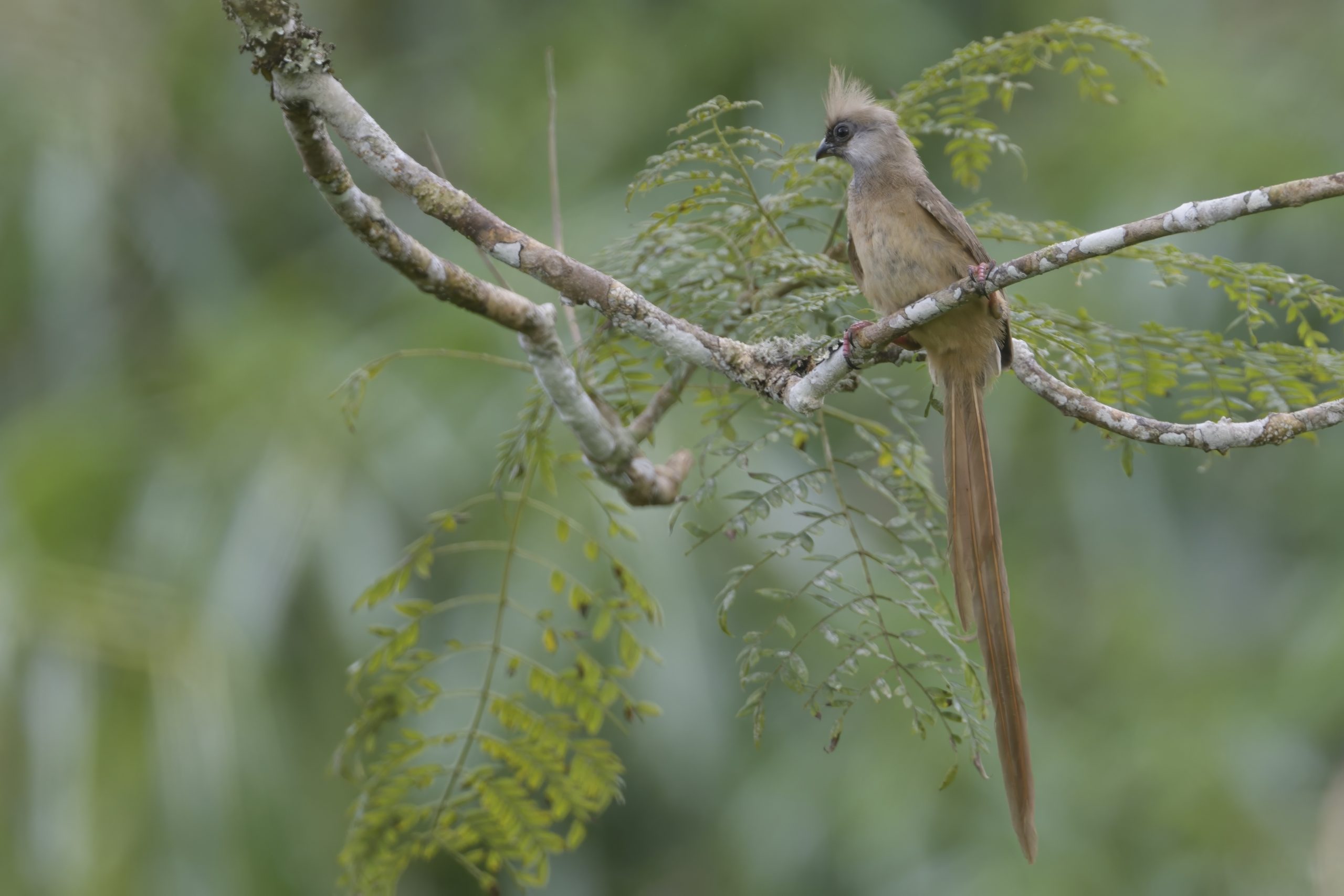
Speckled Mousebird, Colius striatus

Purple-banded Sunbird (juvenile), Cinnyris bifasciatus

Southern Yellow White-eye, Zosterops anderssoni
Day 5, Saturday, May 6: Zigi forest.
We started up the same track as the afternoon the day before. Here ar some of the birds we recorded: Usambara Hyliota, Little Yellow Flycatcher, Grey Tit Flycatcher, Green Tinkerbird, Green Malkoha, Black-and-white Shrike Flycatcher, Ashy Flycatcher and Palm-nut Vulture. We went back to the lodge for lunch. After lunch, we recorded the following species: Retz´s and Chestnut-fronted Helmetshrike, Blue-spotted Wood Dove, African Golden Oriole, Scaly-throated Honeyguide and Black-backed Puffback
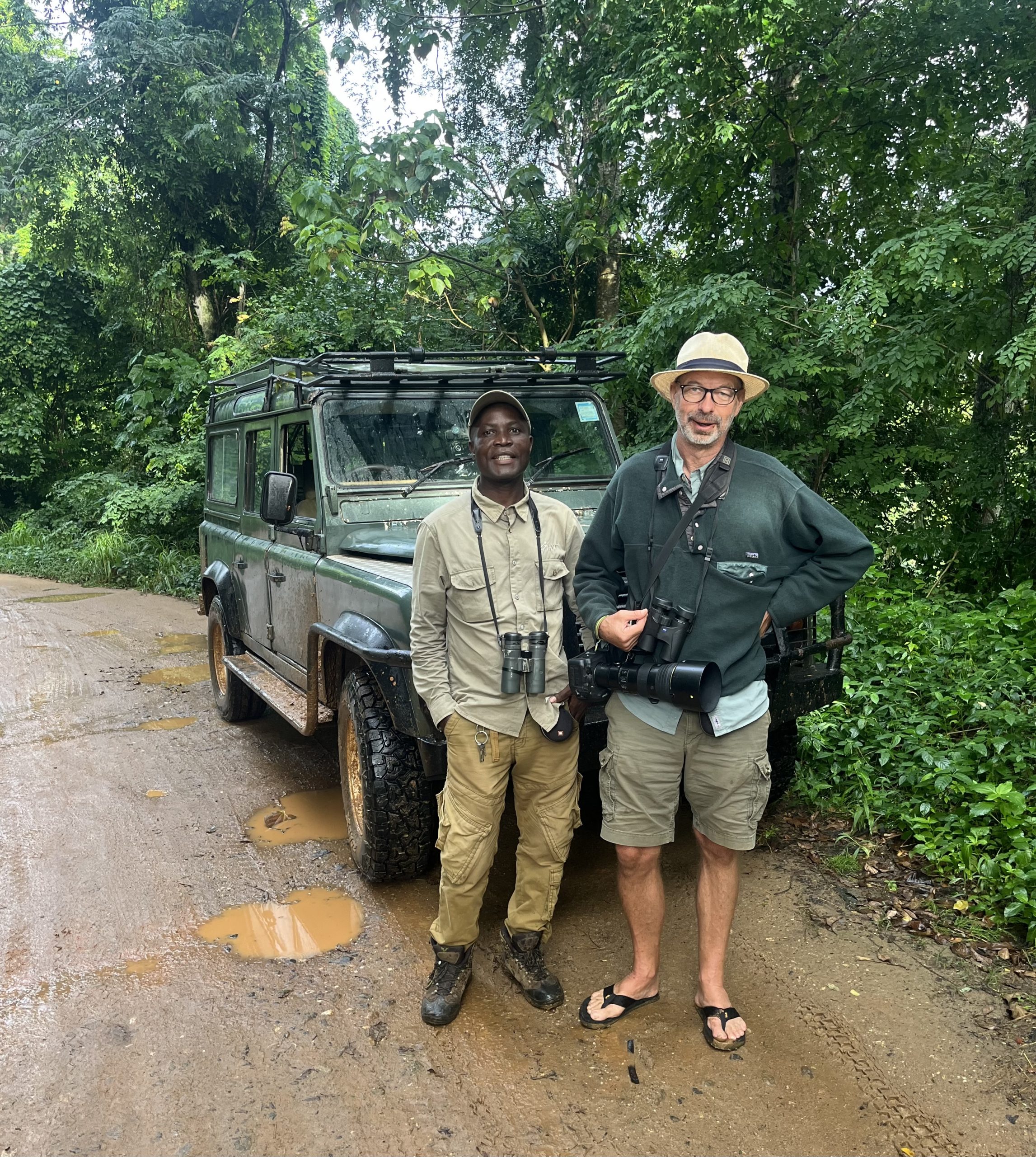
Martin and me in Zigi Forest.
Day 6, Sunday, May 7: Zigi Forest to Kwamgumi Forest.
We birded Zigi Forest in the morning, but no new birds. Then headed for Maramba Village where we organised the payments for entrance to Kwamgumi forest and checked into our guest house. Then we did a recon trip to Kwangumi Forest to find a camp site. Here are some of the birds we found on our search for a camp site: Crested Francolin, Grey-headed Bushshrike, Grey-olive Greenbul, Black-winged Red Bishop, Crowned Hornbill and Kurrichane Thrush. We found a suitable camp site. It started raining so we returned to our guest house.
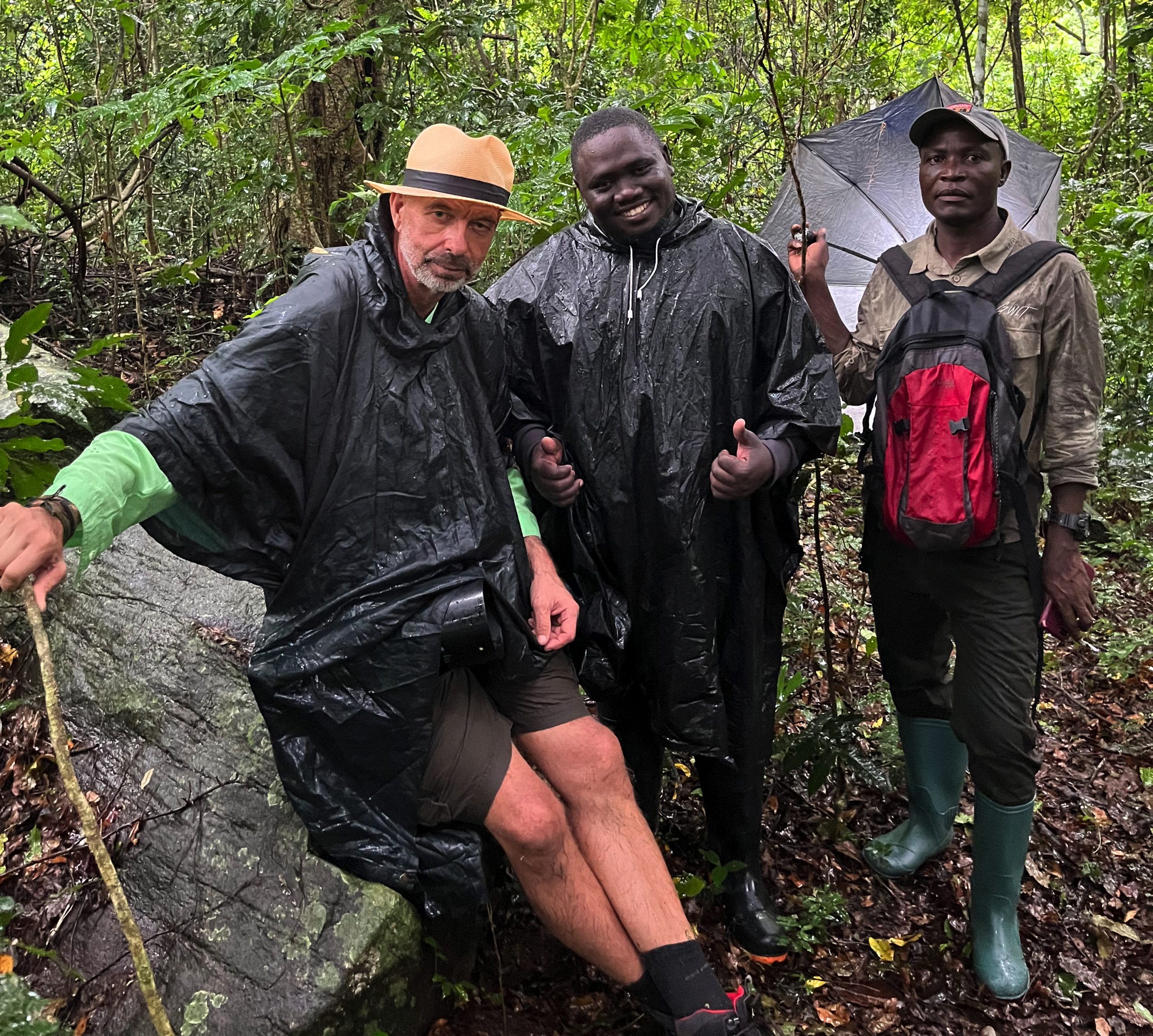
Me, the local forest ranger and Martin have just found our campsite in Kwamgumi Forest

Black-winged Red Bishop (female), Euplectes hordeaceus
Day 7, Monday, May 8: Maramba Village to Kwamgumi Forest.
We had arranged for porters to take our gear up in the forest. Camp were set up fast and we started birding. Here are some of the birds we registered the first day in the forest: East Coast Akalat, Lizard Buzzard, Green-headed Oriole, Green Barbet, Blue-mantled Crested Flycatcher, Plain-backed Sunbird, Dark-backed Weaver, Grey-backed Camaroptera, Fork-tailed Drongo. Little Yellow Flycatcher, Lowland Tiny Greenbul, Grey Cuckooshrike, Chestnut-fronted Helmetshrike, Yellow-streaked Greenbul, White-eared Barbet, Fischer´s Greenbul, Silvery-cheeked Hornbill. Olive Sunbird, Black-backed Puffback, Red-capped Robin-Chat, Common Square-tailed Drongo, White-chested Alethe, Kretchmer´s Longbill, Mombasa Woodpecker, Trumpeter Hornbill, Tanzanian Illadopsis and at night Sokoke Scops Owl. It was very challenging birding, very dark in the forest and impossible to get any pictures. I made a chicken casserole that we all enjoyed. We retired early to our tents and had quite a heavy rain storm at night.

Organising the porters to take our gear to Kwamgumi Forest
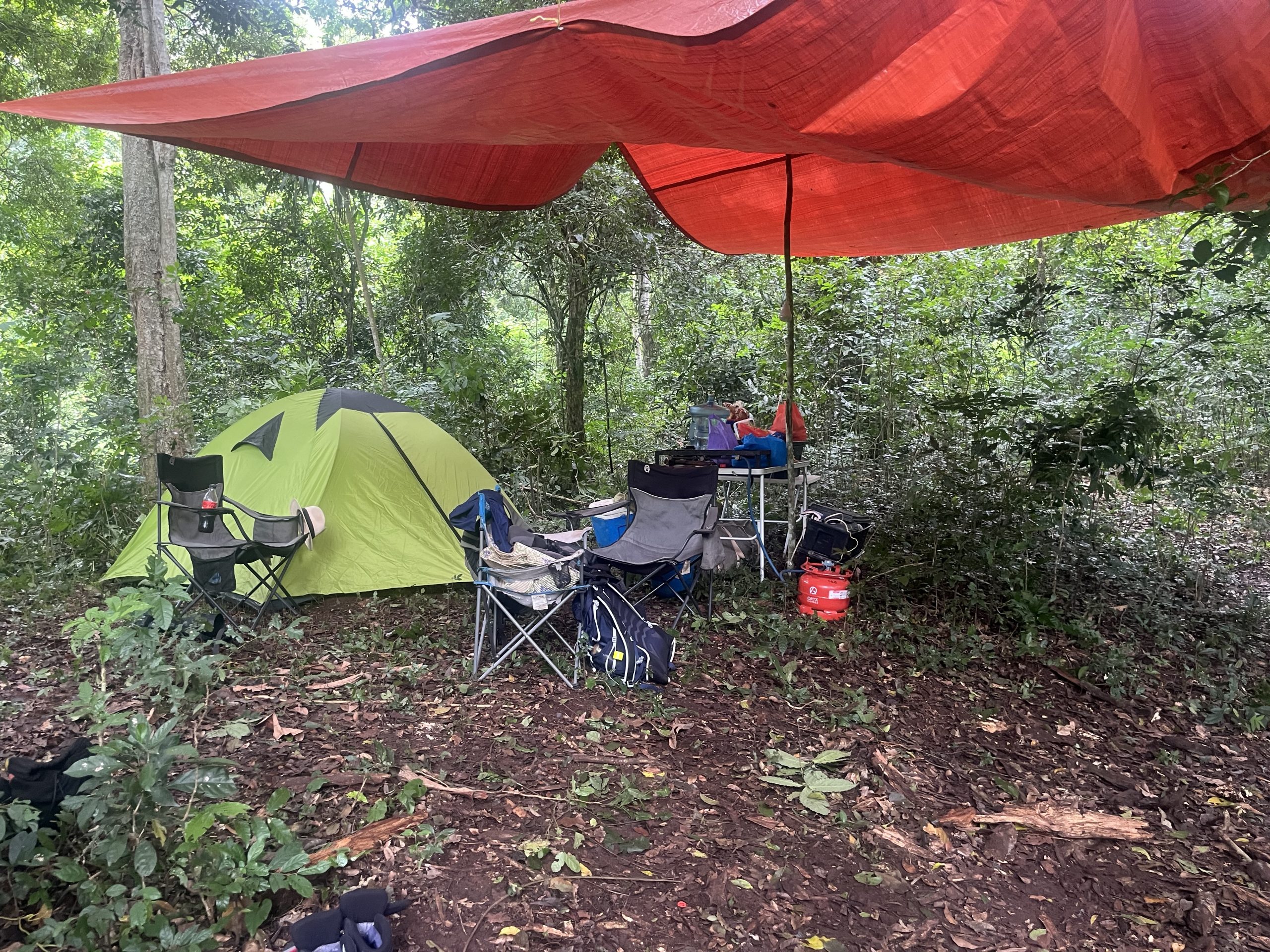
Camp in Kwamgumi Forest
Day 8, Tuesday, May 9: Kwamgumi Forest.
Full day in the forest again: Still no pictures, but we added African Goshawk, Southern Banded Snake Eagle, Grey Tit-Flycatcher, White-starred Robin, Forest Batis, Green Wood Hoopoe, African Harrier Hawk, Baglafecht Weaver and Scaly-throated Honeyguide to our list
Day 9, Wednesday, May 10: Kwamgumi Forest
We birded the forest all day and my Danish friend finally got some recordings of Swynnerton´s Robin (the target bird for the forest). Other birds observed: Little Spotted Woodpecker, African Pygmy Kingfisher, African Wood Owl and Usambara (Frazer´s) Eagle-Owl.
Day 10, Thursday May, 11: Kwamgumi Forest to Midas Eco Camp, Watamu Kenya.
The others went up in the forest again that morning, but several days without a picture made me decide to go to the forest edge instead. New birds added: Yellow Bishop, White-browed Coucal and much later Northern Carmine Bee-eater. We returned to camp and the porters arrived early. We had packed the car ahead of time and drove to the main road north of Tanga towards the border. At the border, everything went fine until I tried to check my car into Kenya. That proved to be quite a hassle. It has always been easy, but not this time. I told my Danish friend to change some USD to Kenyan Shillings. We somehow misunderstood each other so we entered Kenya without a single Kenyan Shilling. The traffic really picked up after Kwale and it was almost bumber to bumber to the ferry. Getting through Mombasa were a nightmare and we finally arrived at Midas Eco Camp around 21:00. Apolloh had organised dinner for us, so we had dinner and retired early to bed.

Black-winged Red Bishop, Euplectes hordeaceus

Yellow Bishop, Euplectes afer
Day 11, Friday, May 12: Midas Creek and Arabuko Sokoke Forest
My Danish friend decided to have an easy morning. Our first sighting was a snake close to our dining area. We walked down to Midas Creek and I was amased by the number of Crab Plovers still there. I estimate 200+. Other birds we saw before lunch included: Red-fronted Tinkerbird, Black-headed Oriole, Amethyst Sunbird, Village Weaver, Yellow-fronted Canary, Dimorphic Egret, Eastern Nicator, Woolly-necked Stork, African Sacred Ibis and Three-banded Plover. We returned to camp for lunch. After lunch, we went into Arabuko Sokoke Forest. Our main target here were Amani Sunbird. My Danish friend recorded more than 20 individuals over the next few days. Other birds recorded that afternoon in the forest included: Bearded Scrub Robin, Red-capped Robin-Chat, Black-backed Puffback, Mombasa Woodpecker, Gorgeous Bushshrike (poor pictures), East Coast Boubou, Terrestrial Brownbul, Forest Batis and Fiery-necked Nightjar. We returned to camp freshened up and had a nice meal before we retired early to bed.
Some pictures from Day 11:

Speckled Green Snake (harmless) inspecting my wheel.

Crab-plover, Dromas ardeola
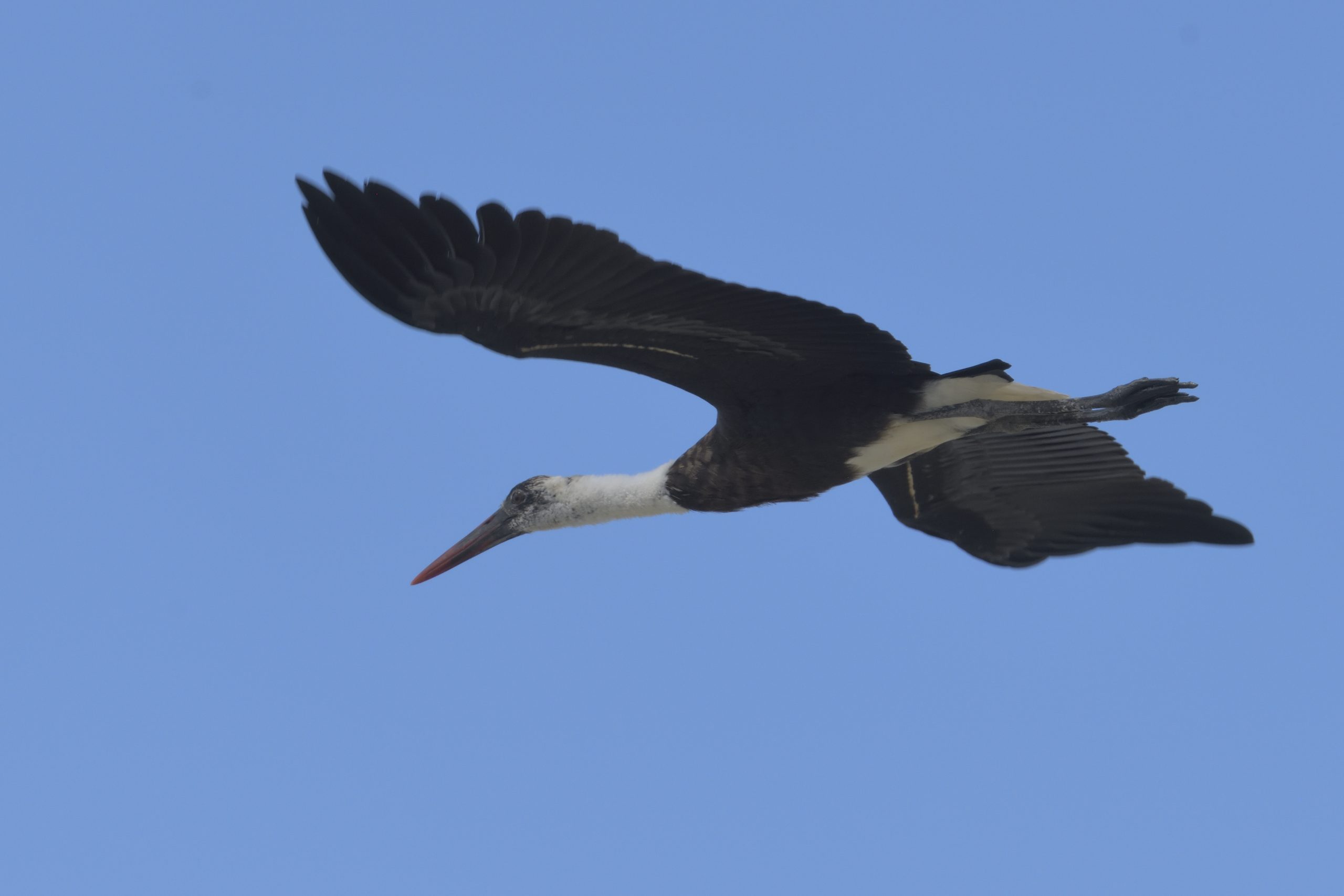
Woolly-necked Stork, Cicionia episcopus
Day 12, Saturday, May 13: Arabuko Sokoke Forst and Midas Creek.
We entered the forest early. My Danish friend continued recording Amani Sunbirds. Here are some of the other species we observed: Ashy Flycatcher, Common Scimitarbill, Sokoke Pipit, Lowland Tiny Greenbul, Chestnut-fronted Helmetshrike, Sokoke Scops Owl, Sombre Greenbul and Coastal Cisticola. We returned to camp for lunch.
After lunch I went down to Midas Creek again and added Grey Plover and Eurasian Whimbrell to my Kenyan list.
Here are some pictures from Day 12:
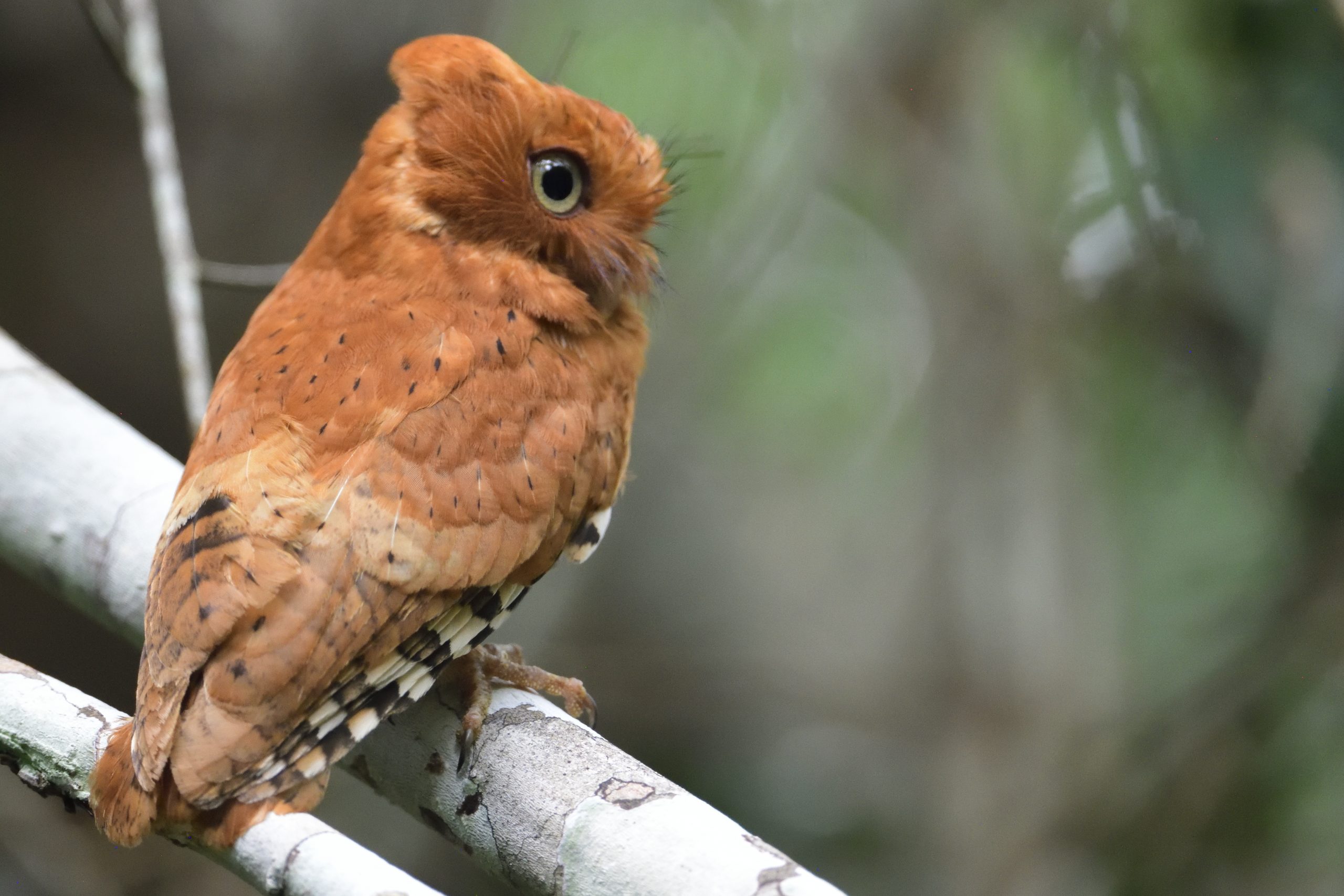
Sokoke Scops Owl, Otus ireneae, Endemic to East Africa
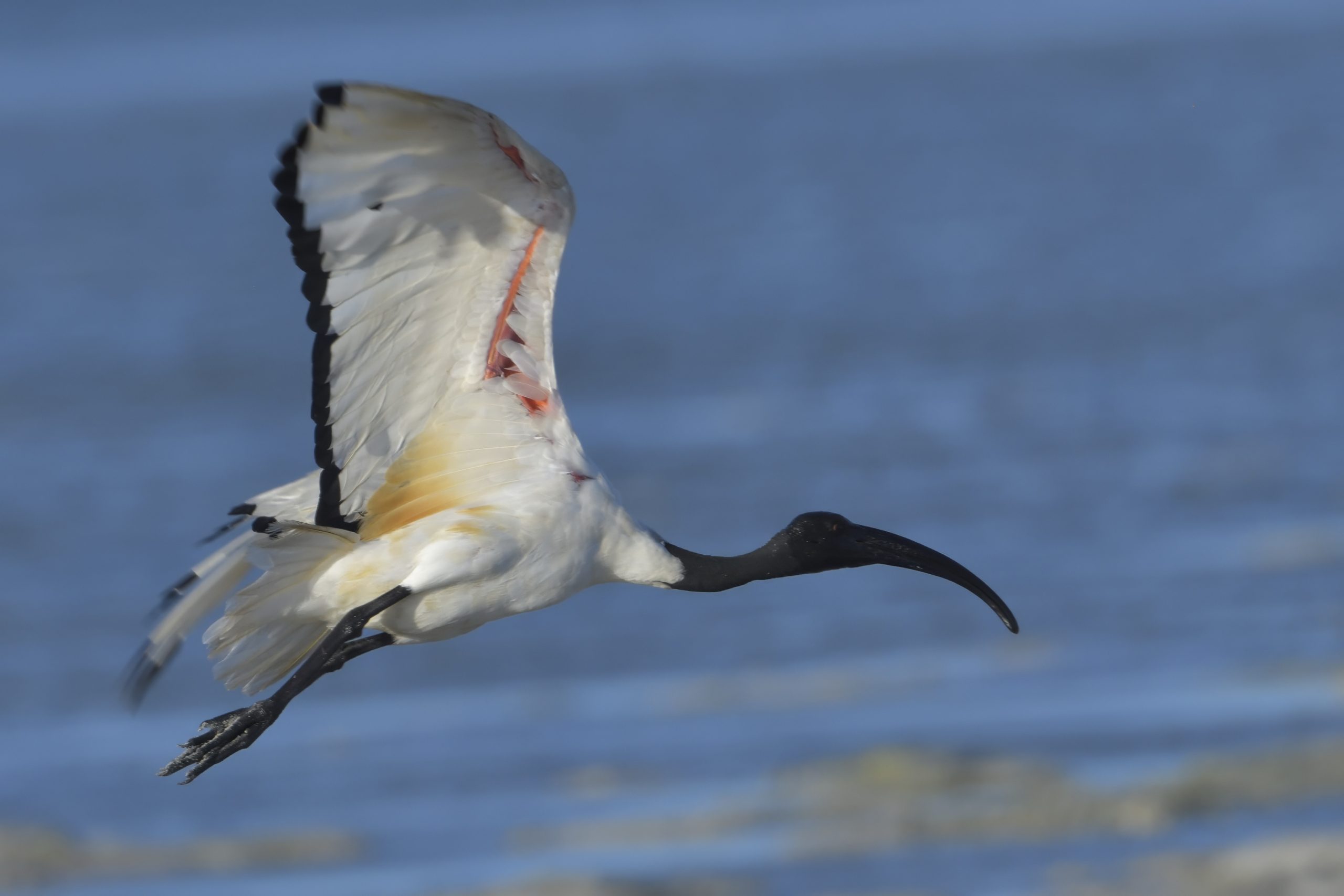
African Sacred Ibis, Threskiornis aethiopic
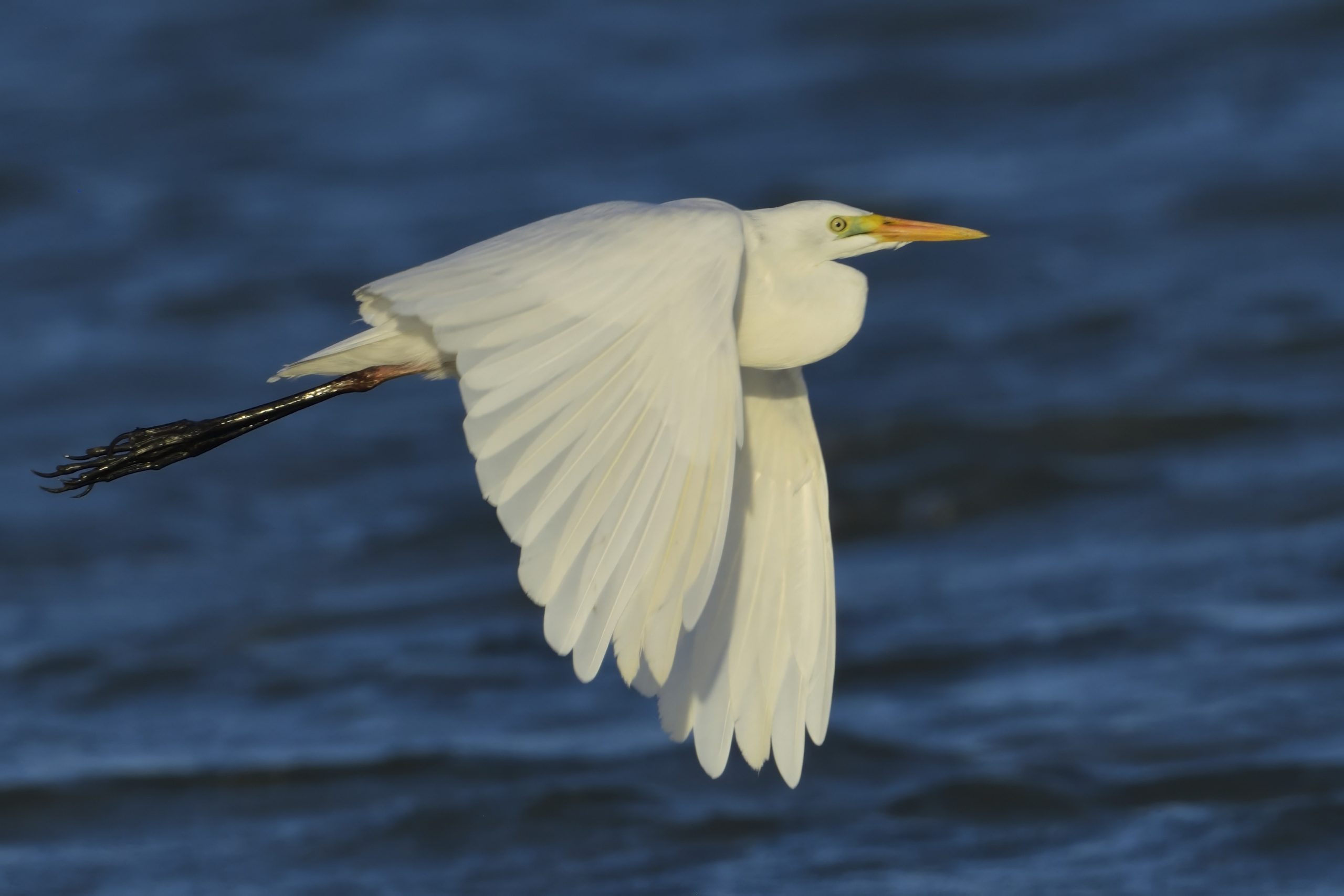
Dimorphic Egret, Egretta dimorpha
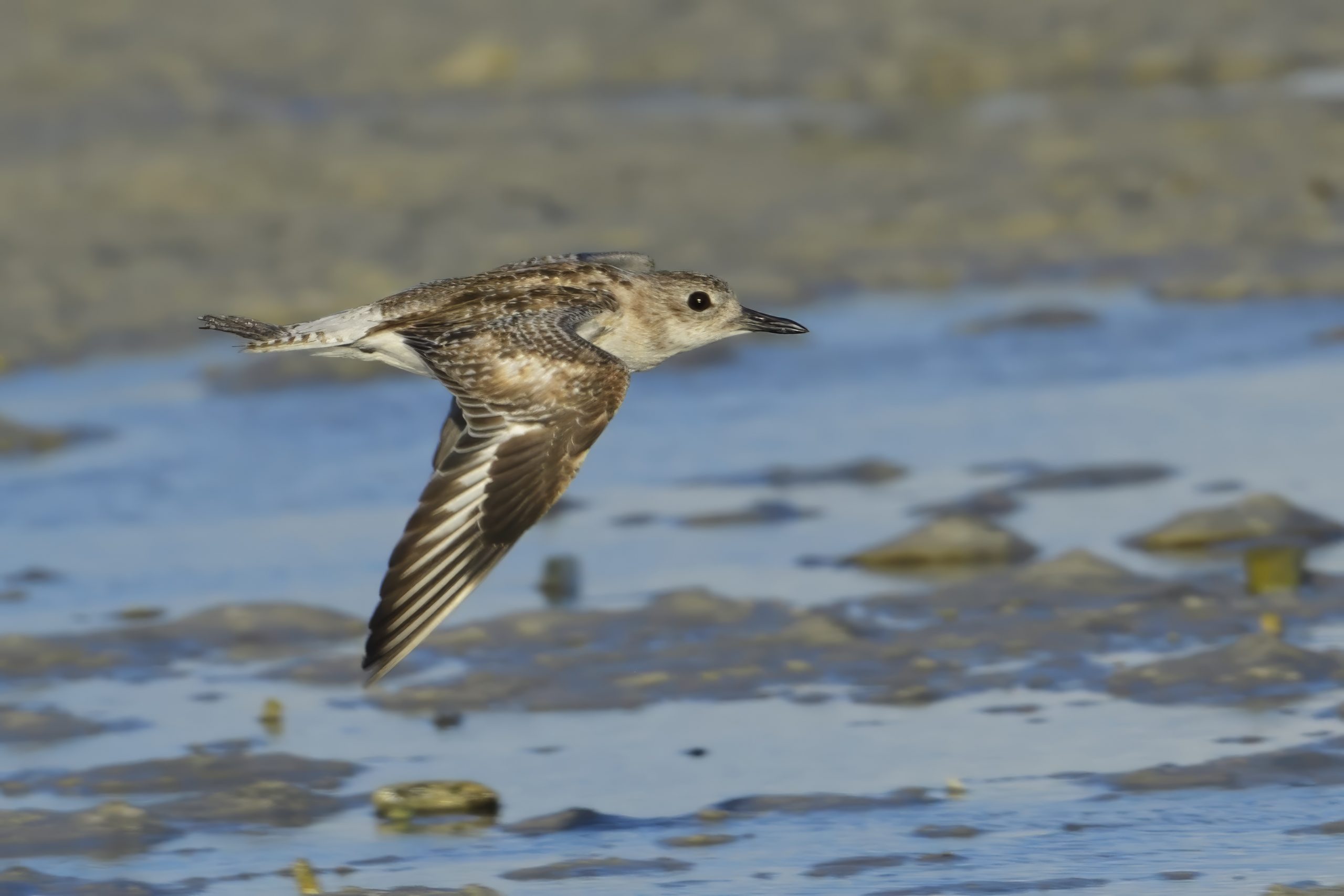
Grey Plover, Pluvialis squatarola

Eurasian Whimbrell, Numenius phaeopus
Day 13, Sunday, May 14, Arabuko Sokoke Forest.
We Spent both the morning and the afternoon birding in Arabuko Sokoke Forest. More recordings of Amani Sunbirds. I also managed to get a great picture of a male. Other new birds: African Fish Eagle, Mourning Collared Dove, Dark-backed Weaver, Scaly-throated Honeyguide, African Paradise Flycatcher, Striped Kingfisher, Green Barbet and Southern Banded Snake Eagle.
Some pictures from Day 13:
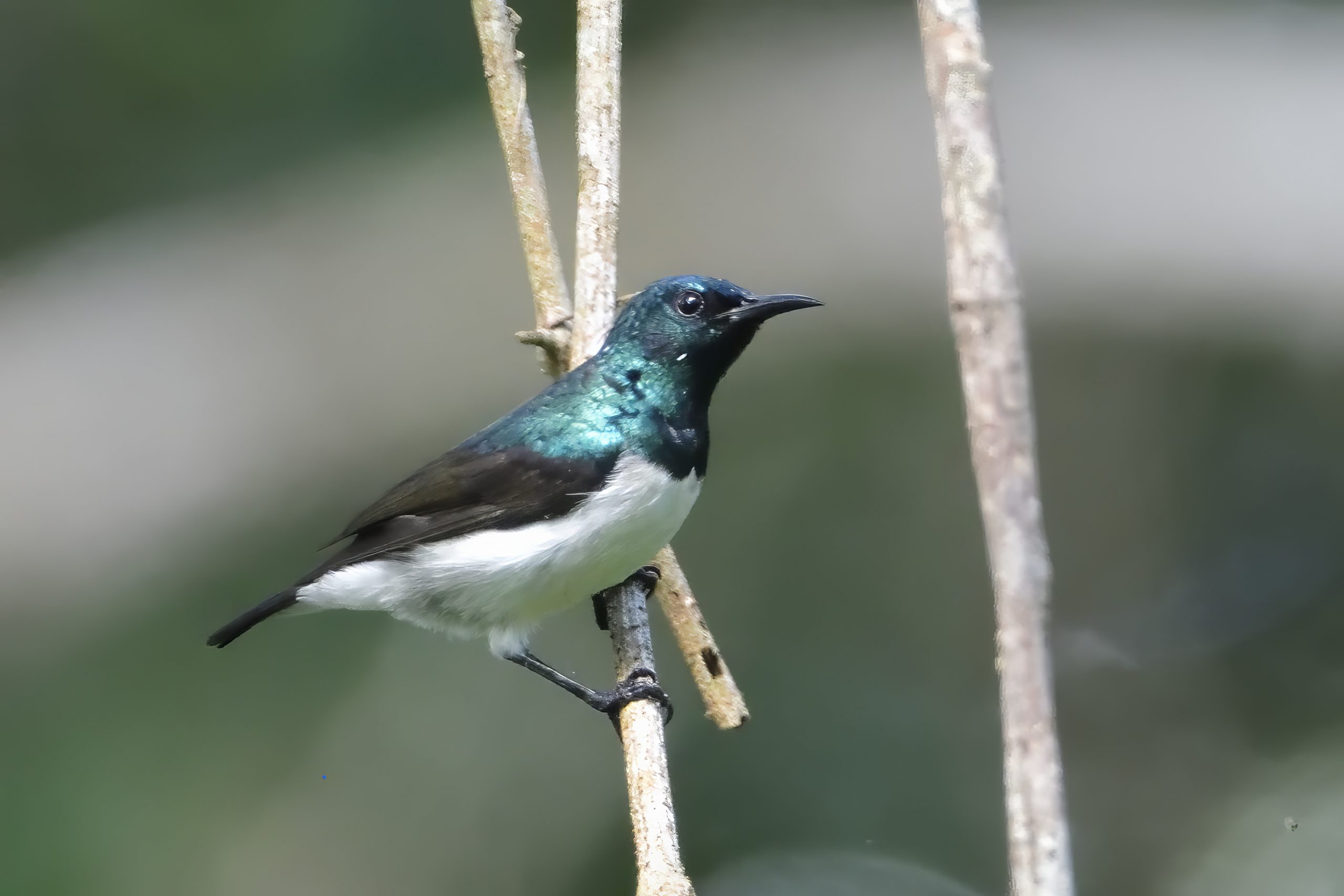
Amani Sunbird, Hedypna pallidigaster, Localiced Endemic to East Africa
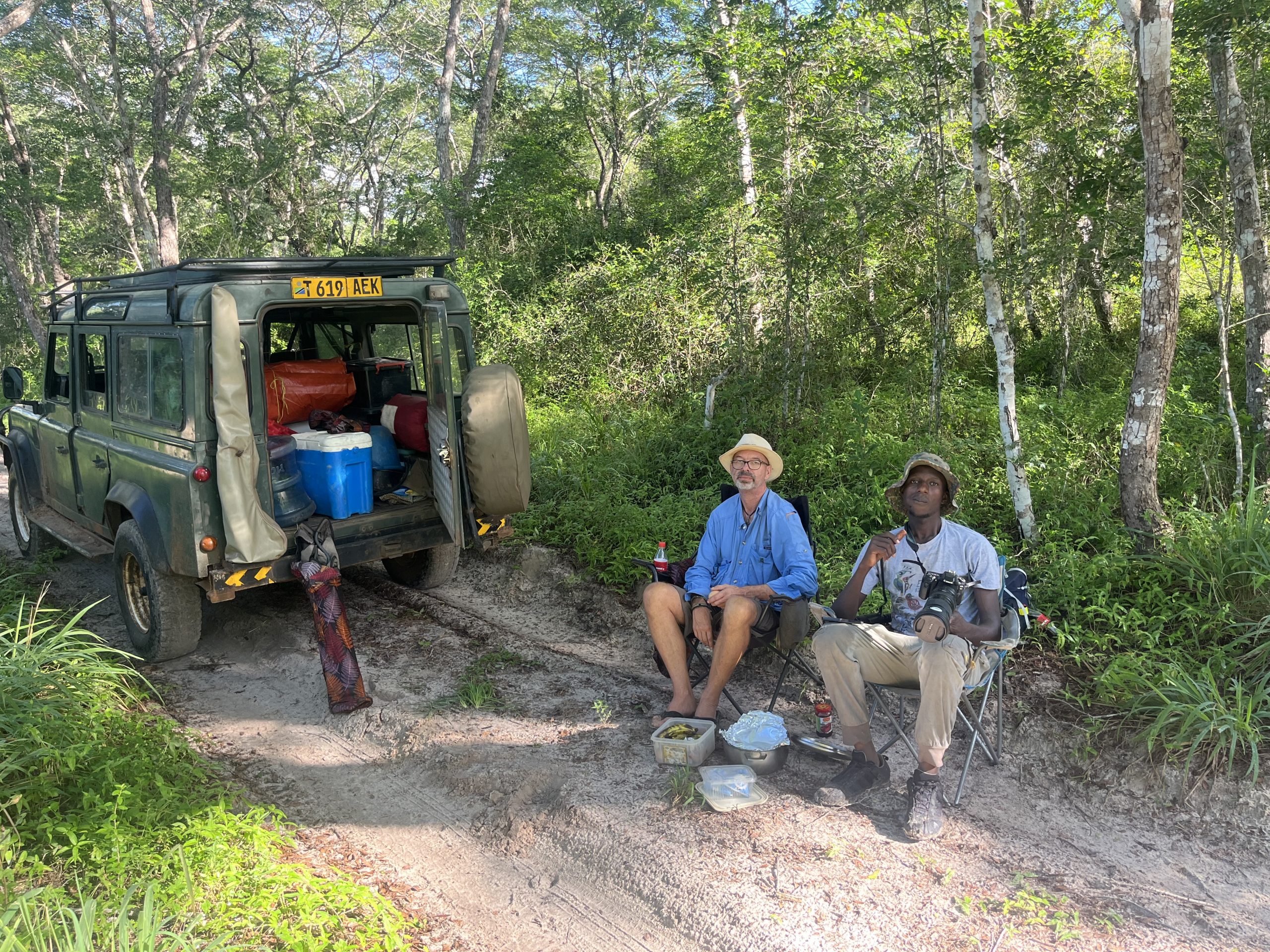
Aolloh and I having breakfast in Arabuko Sokoke Forest.
Day 14, Monday, May 15, Arabuko Sokoke Forest
New recordings of Amani Sunbird. I walked a little by myself and managed to get great shots of Black-headed Apalis and Little Yellow Flycatcher. Again we spent the entire day in Arabuko Sokoke Forest. Here are some of the other birds we registered: Mangrove Kingfisher, Malindi Pipit, Coastal Cisticola, Intermediate Egret, Grey-headed Kingfisher, Blue-mantled Crested Flycatcher and East Coast Akalat.
Some pictures from Day 14:

Balck-headed Apalis, Apalis melanocephala, Endemic to SE Africa

Little Yellow Flycatcher, Erythrocercus holochlorus, Endemic to Coastal East Africa
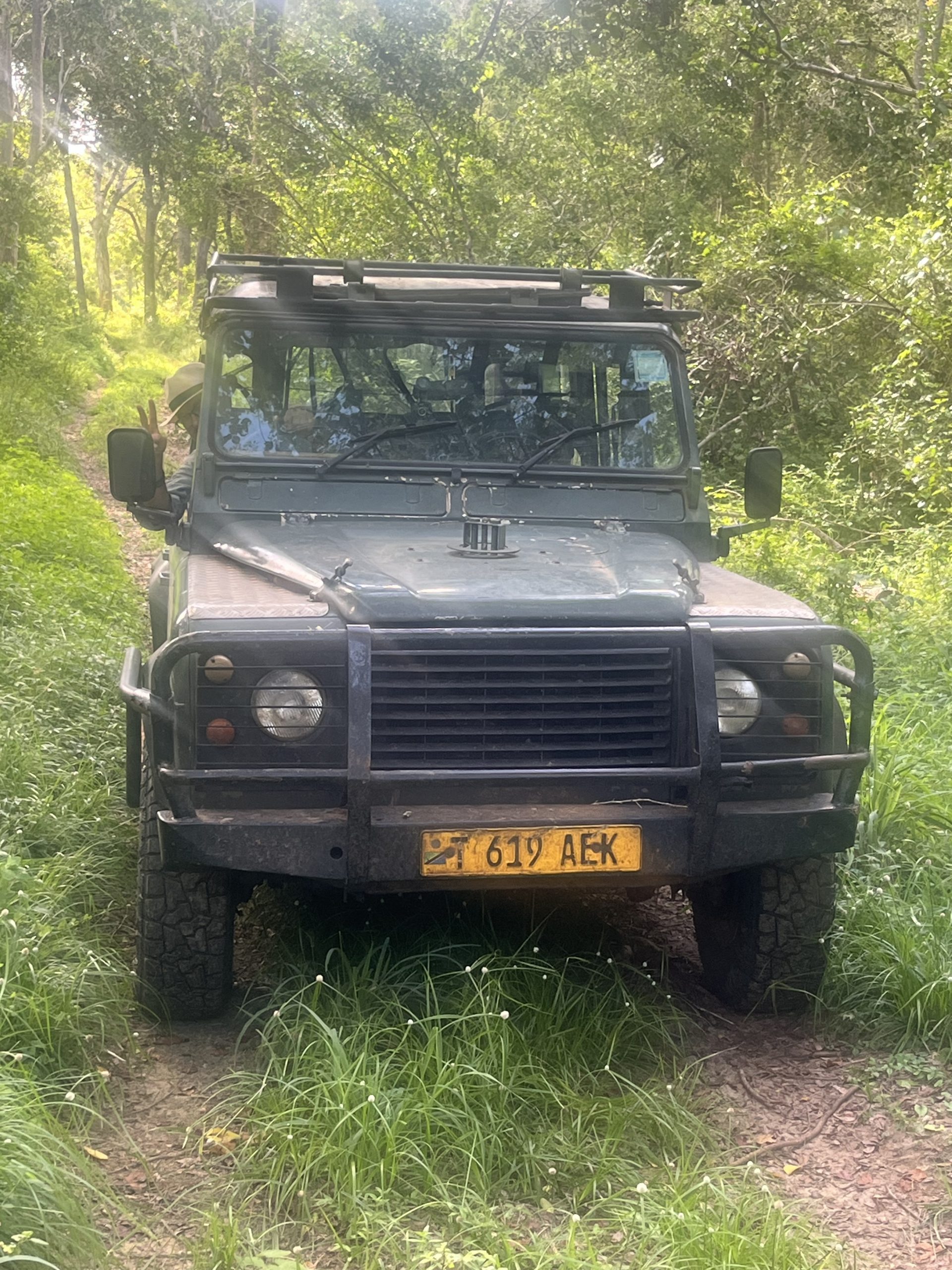
The dedicated driver and his Landy in Arabuko Sokoke Forest.
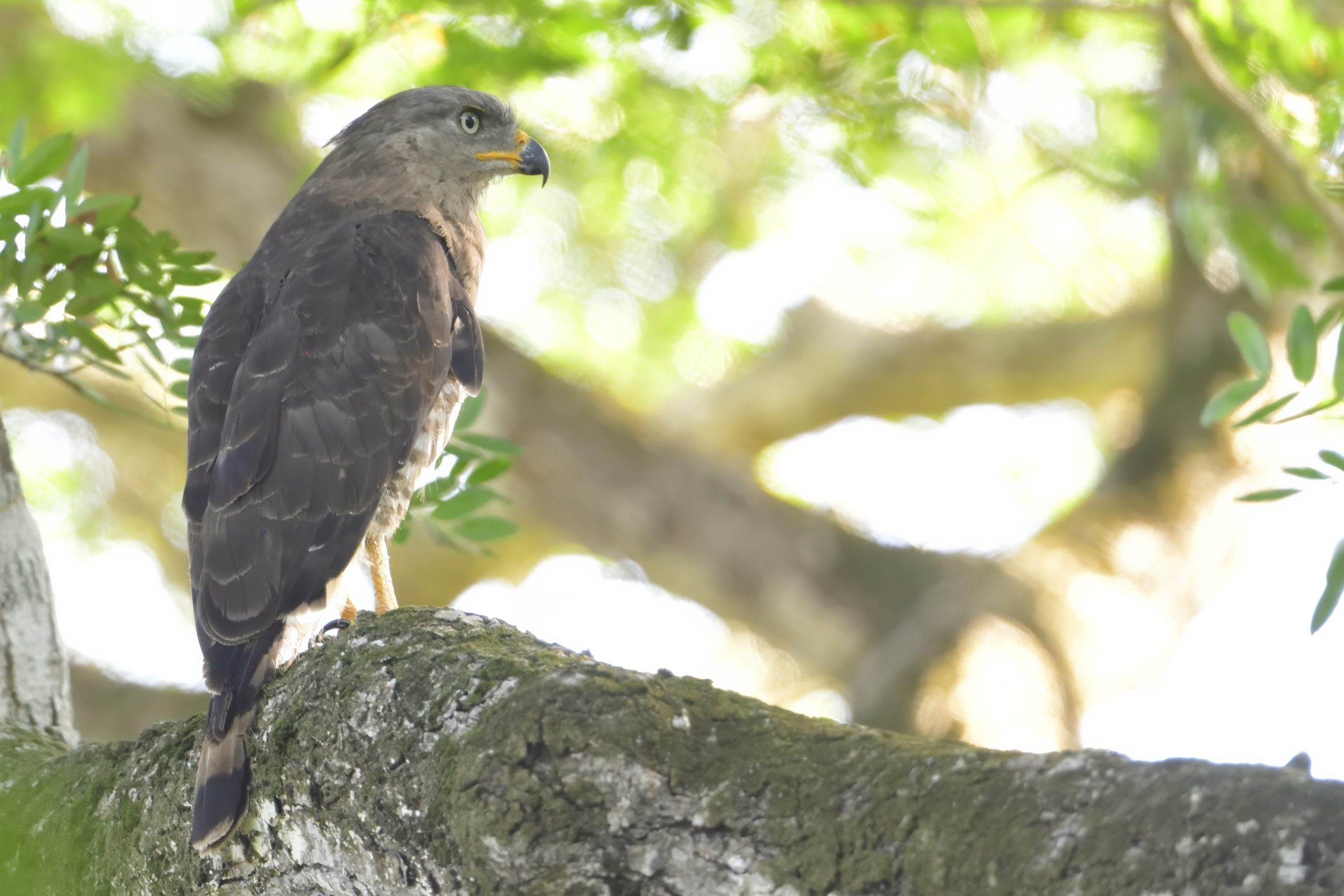
Soutern Banded Snake Eagle, Circaetus fasciolatus
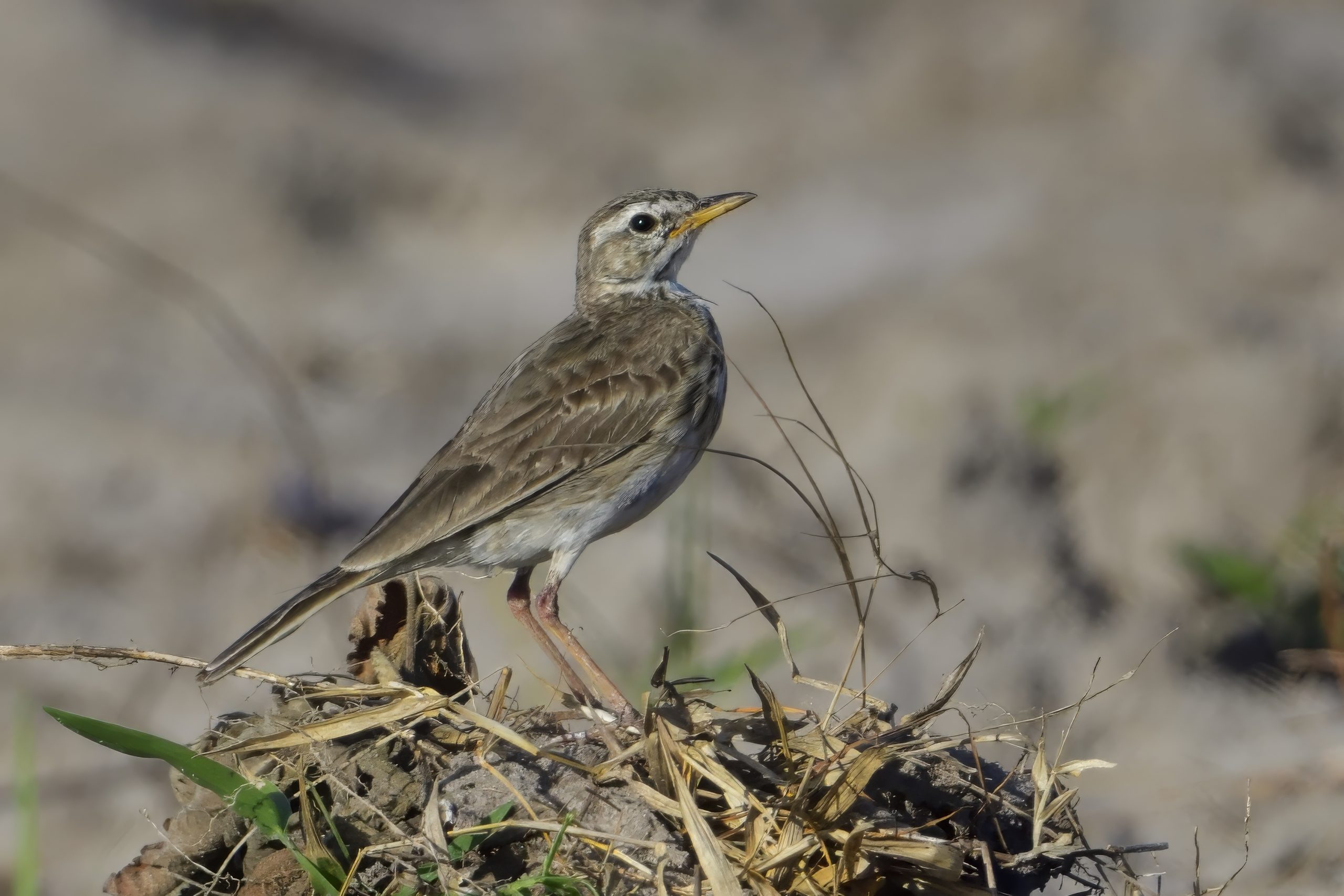
Malindi Pipit, Anthus melindae, Endemic to Coastal Kenya and Somalia

Pin-tailed Whydah, Vidua macroura
Day 15, Tusesday, May 16: Arabuko Sokoke Forest to Dakatcha Forest
We started the morning as usual in Arabuko Sokoke forest. We found a flock of Eastern Crested Guineafowls. Other birds: Trumpeter Hornbill, Red-tailed Ant Thrush and Long-crested Eagle. We returned to camp and I spoke with my Danish friend about the Clarke´s Weaver in Dakatcha, he showed no interest so Apolloh and I took off. We met our guide Julio at the village of Marafa and we were finally birding for real. On the way in, we registered Pale Flycatcher. We parked the car and went hunting. Here are some of the birds we found that afternoon: East Coast Boubou, Black-headed Oriole, Chestnut-fronted Helmetshrike, Crowned Hornbill, Black-collared Barbet, Ashy Flycatcher, African Barred Owlet (An EA lifer for me that played games with us for a long time before we finally found it nicely perched) Green Wood Hoopoe, Scaly-throated Honeyguide, Narina Trogon, Yellow-rumped Tinkerbird, Retz´s Helmetshrike and then finally huge flocks of Clarke´s Weavers. However, they flew into a tree and disappeared, then they flew to the next tree and so on, but I finally managed to get pictures of both the male and the female. We started walking back to the car and picked up Violet-backed Starling and Black-crowned Tchagra. A very successful outing. We stopped at the Marafa Village and had some food before we checked in to our guest house and retired for the night.
Some pictures from Day 15;
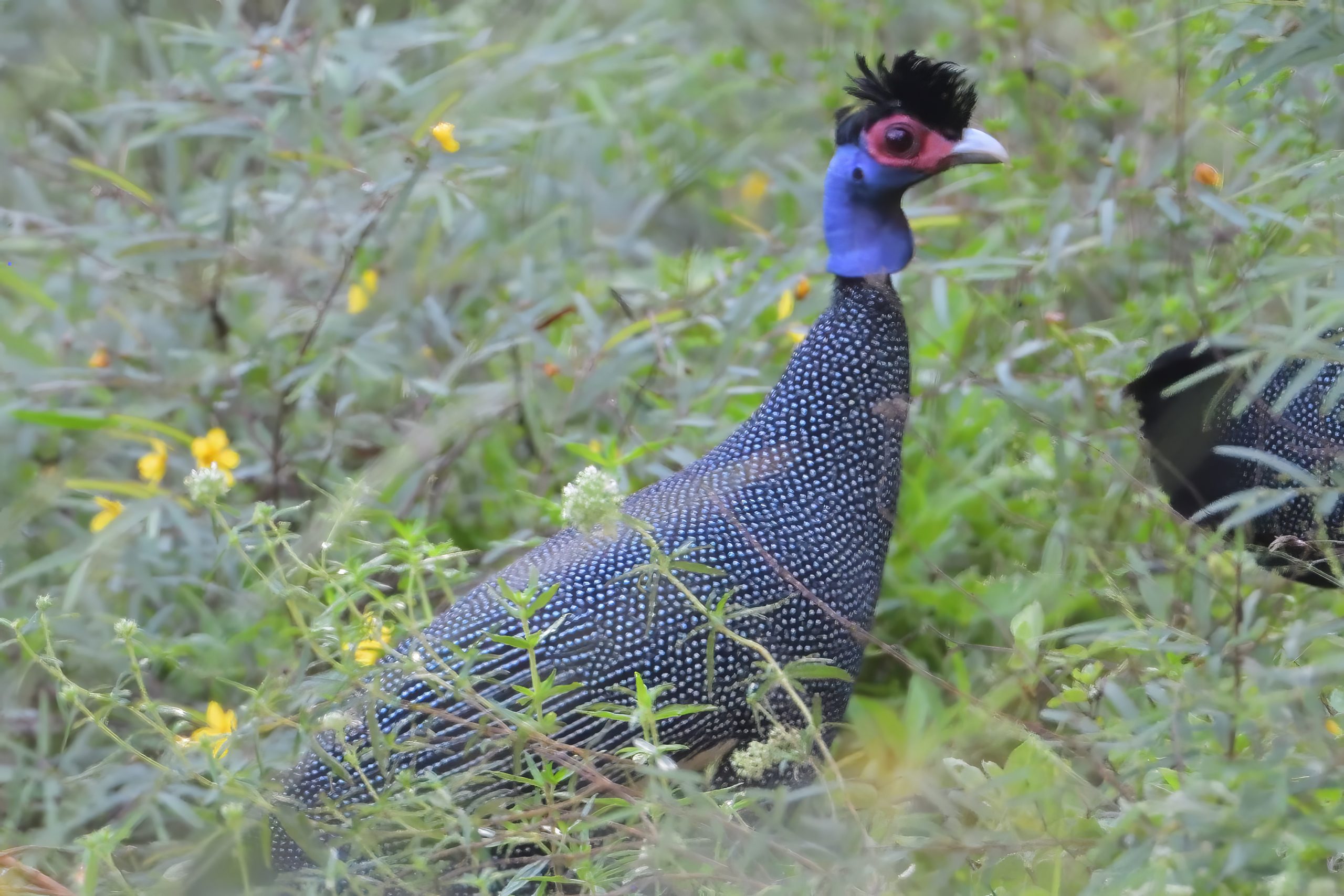
Eastern Crested Guineafowl, Guttera pucherani, Endemic to NE Africa
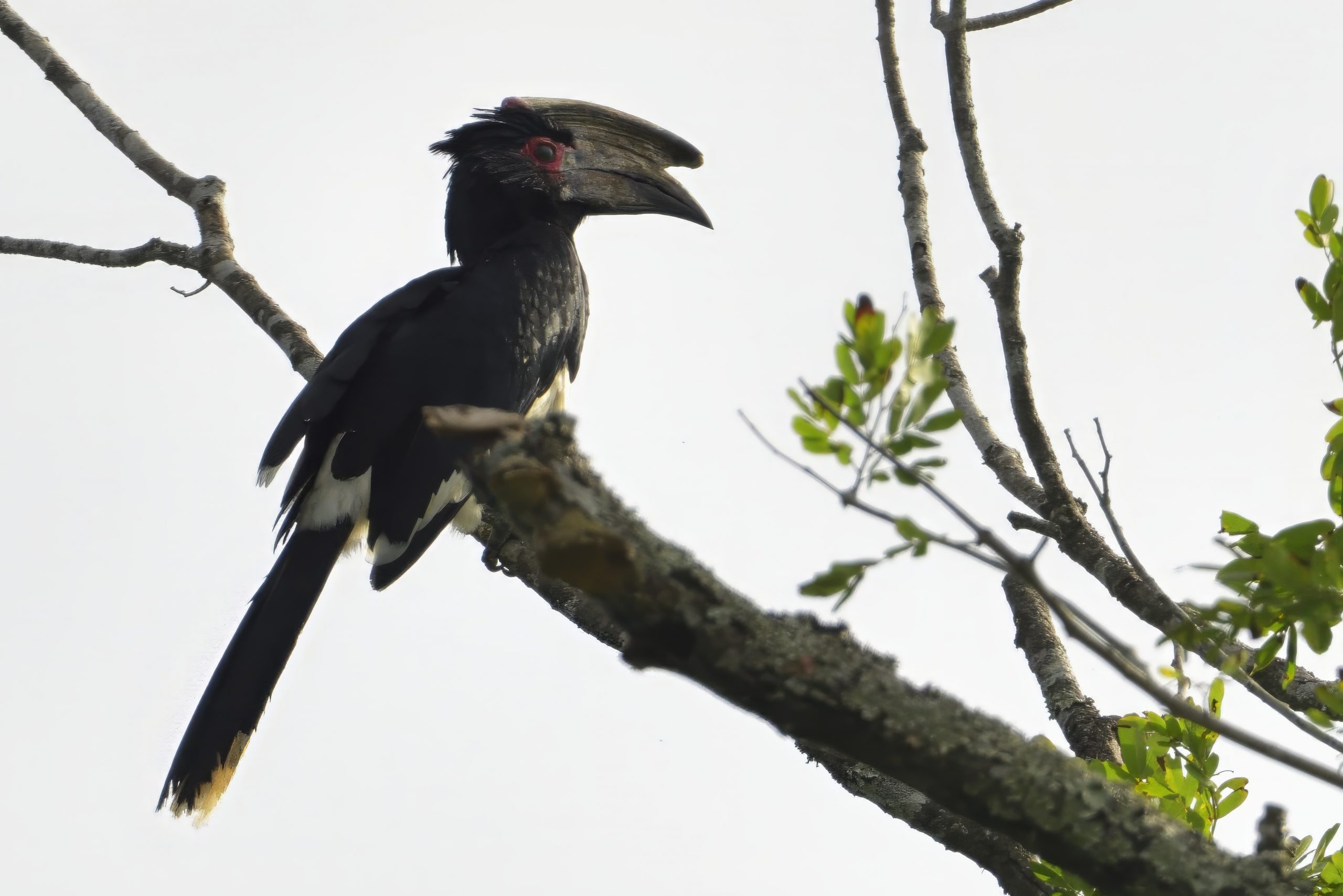
Trumpeter Hornbill, Bycanistes bucinator

Chestnut-fronted Helmetshrike, Prionops scopifrons

Ashy Flycatcher, Muscicapa caerulescens

Scaly-throated Honeuguide, Indicator variegatus
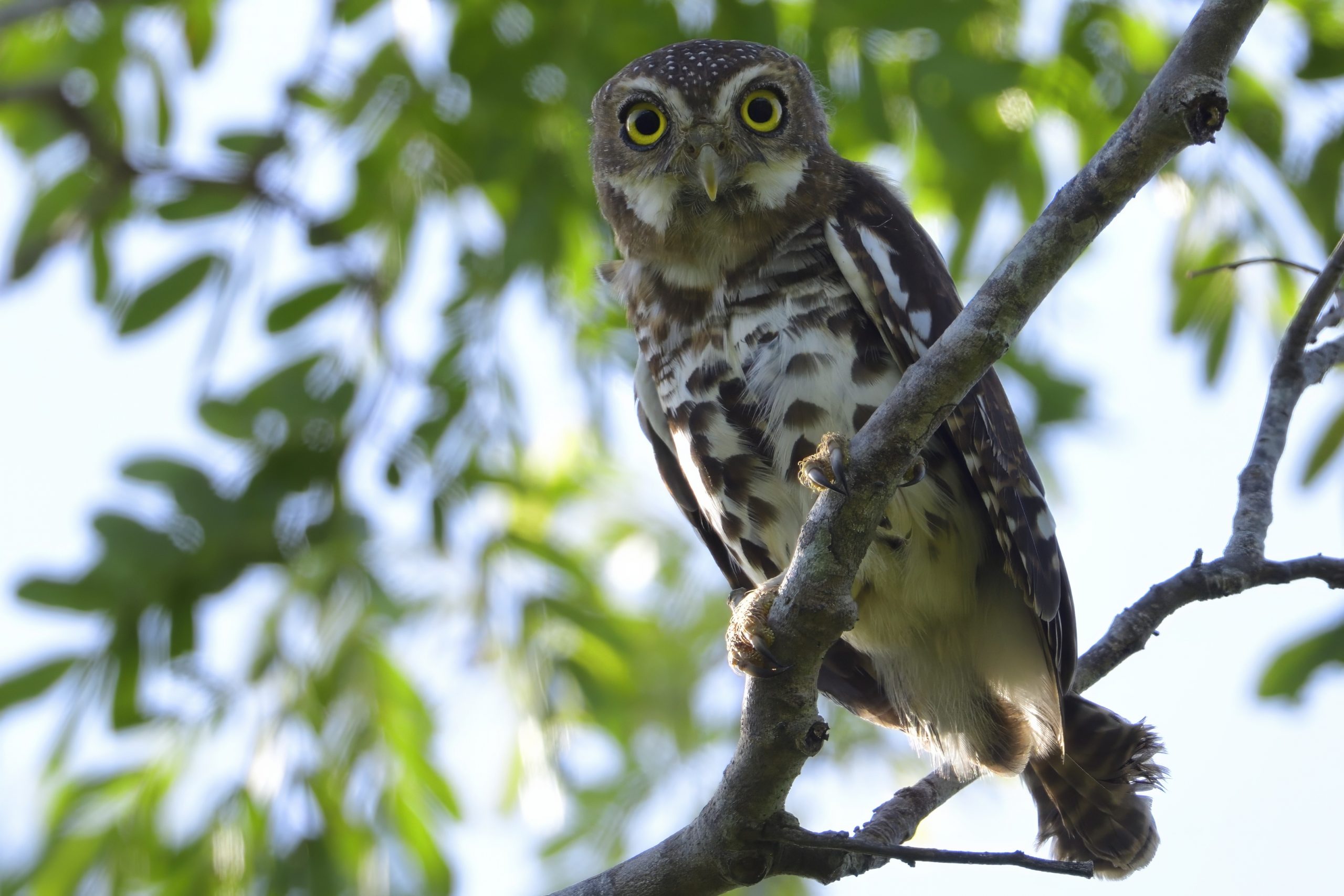
African Barred Owlet, Glaucidium capensa

Clarke´s Weaver (female), Ploceus golandi, Endemic to Coastal Kenya

Clarke´s Weaver, Ploceus golandi, Endemic to Coastal Kenya
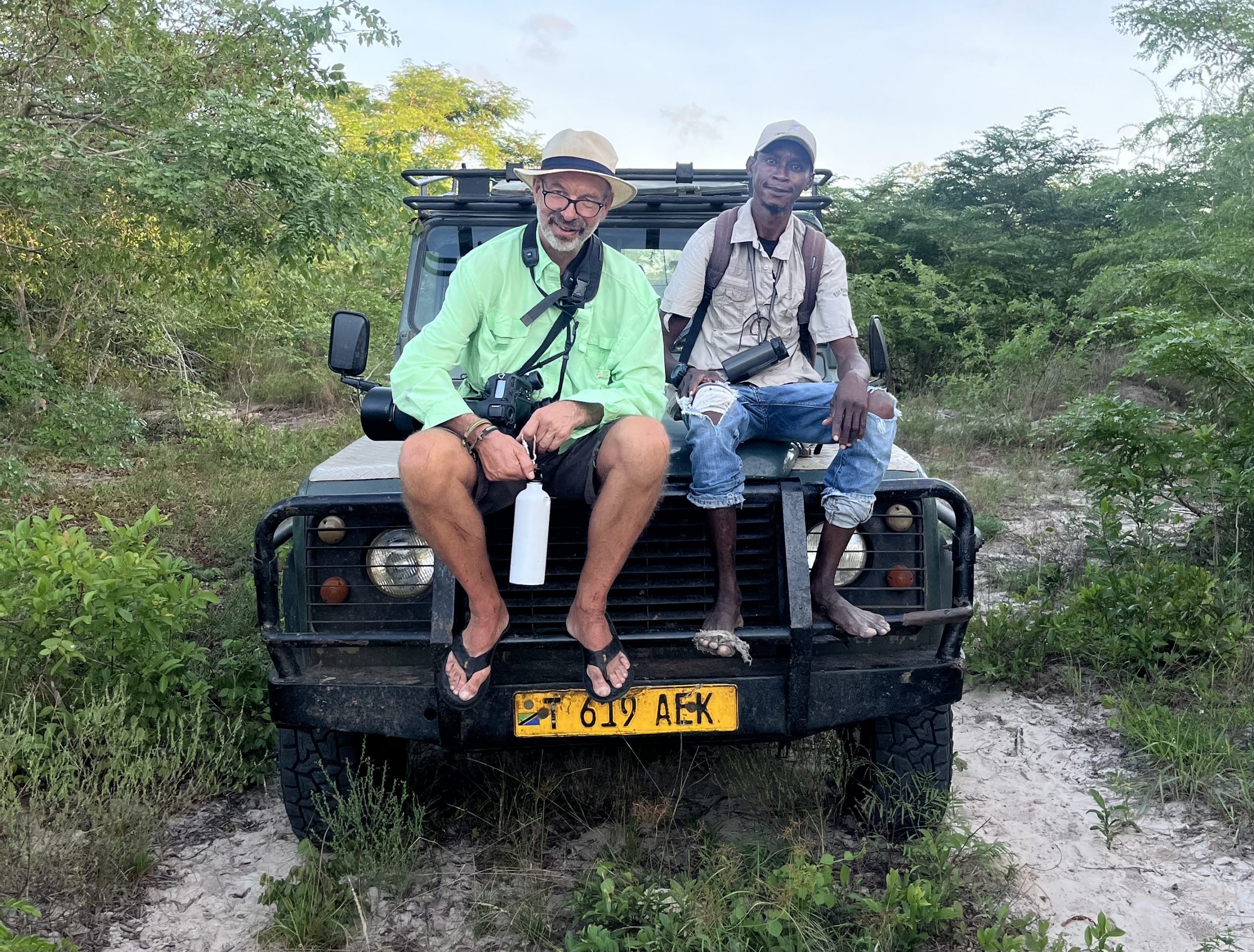
I am the flip flop birder, but our local guide in Dakatcha birded bare foot 🙂
Day 16, Wesnesday, May 17: Dakatcha Forest to Arabuko Sokoke Forest
We met Julio at Marafa and drove to the swamp where the Clarke´s Weaver´s were nesting. We saw huge flocks of them flying out, but impossible to get any decent pictures. Other birds we saw included: Thick-billed Weaver, Fischer´s Turaco, Little Rush Warbler, Fan-tailed Widowbird, Malachite Kingfisher, Black Crake, Grey-headed Sunbird, Allen´s Gallinule, Green Malkoha, African Openbill, Senegal lapwing, Northern Brownbul and Sombre Greenbul. We left the swamp and headed back to the forest. Here are some of the birds we found: Sombre Greenbul, Long-tailed Fiscal, Olive Bee-eater, Scaly Babbler, Brown-headed Parrot, Greater Blue-eared Starling, Coqui Francolin, Lizard Buzzard, Amethyst Sunbird and Yellow-bellied Greenbul. We finished up and drove back to Midas Eco Camp. My Danish friend were surprised to see us arrive for lunch. We drove in to Arabuko Sokoke Forest again, but added only Black-bellied Starling as a new bird.
Some pictures from Day 16
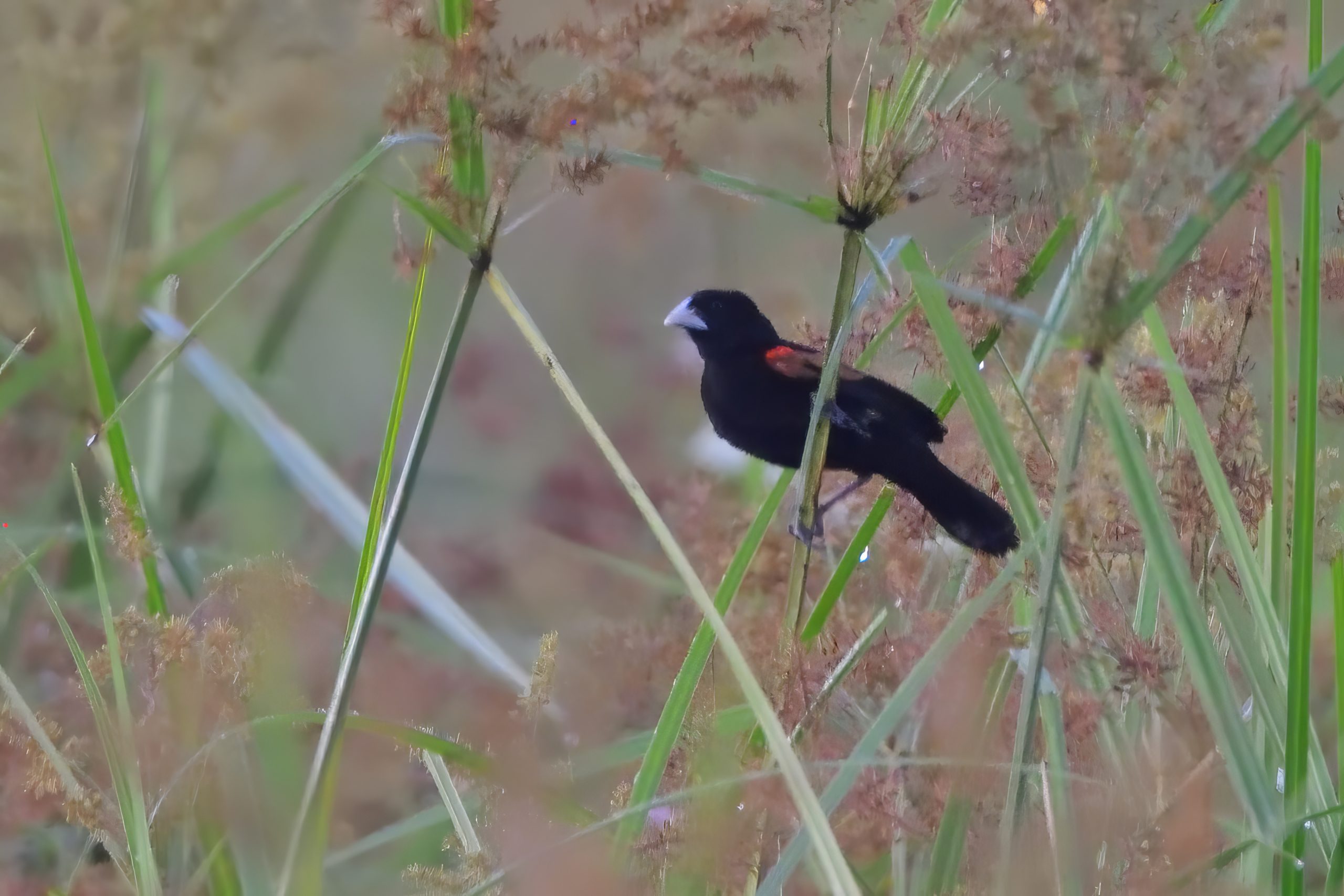
Fan-tailed Widowbird, Euplectes axillaris
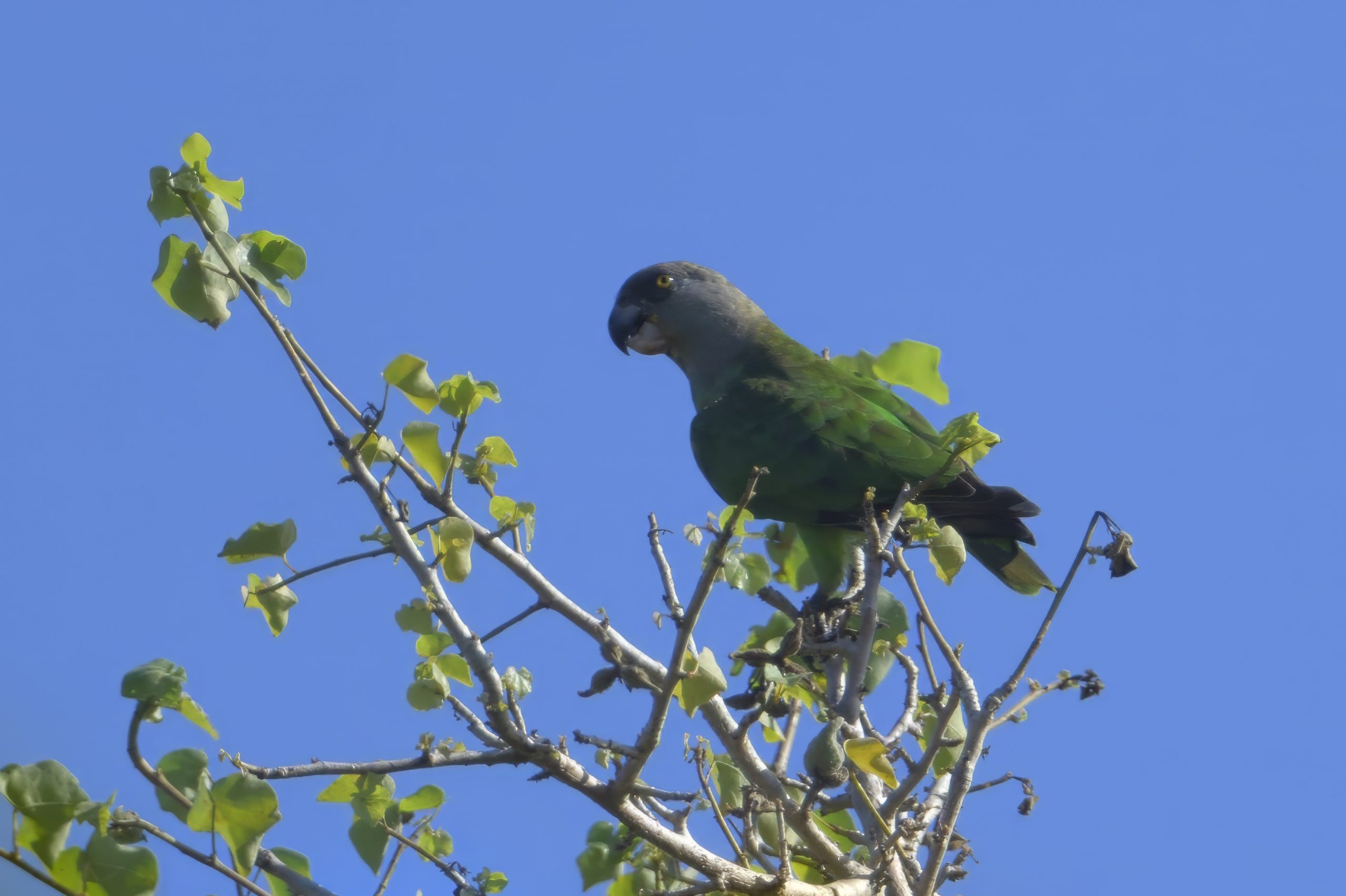
Brown-headed Parrot, Poicephalus cryptoxanthus, Endemic to SE Africa
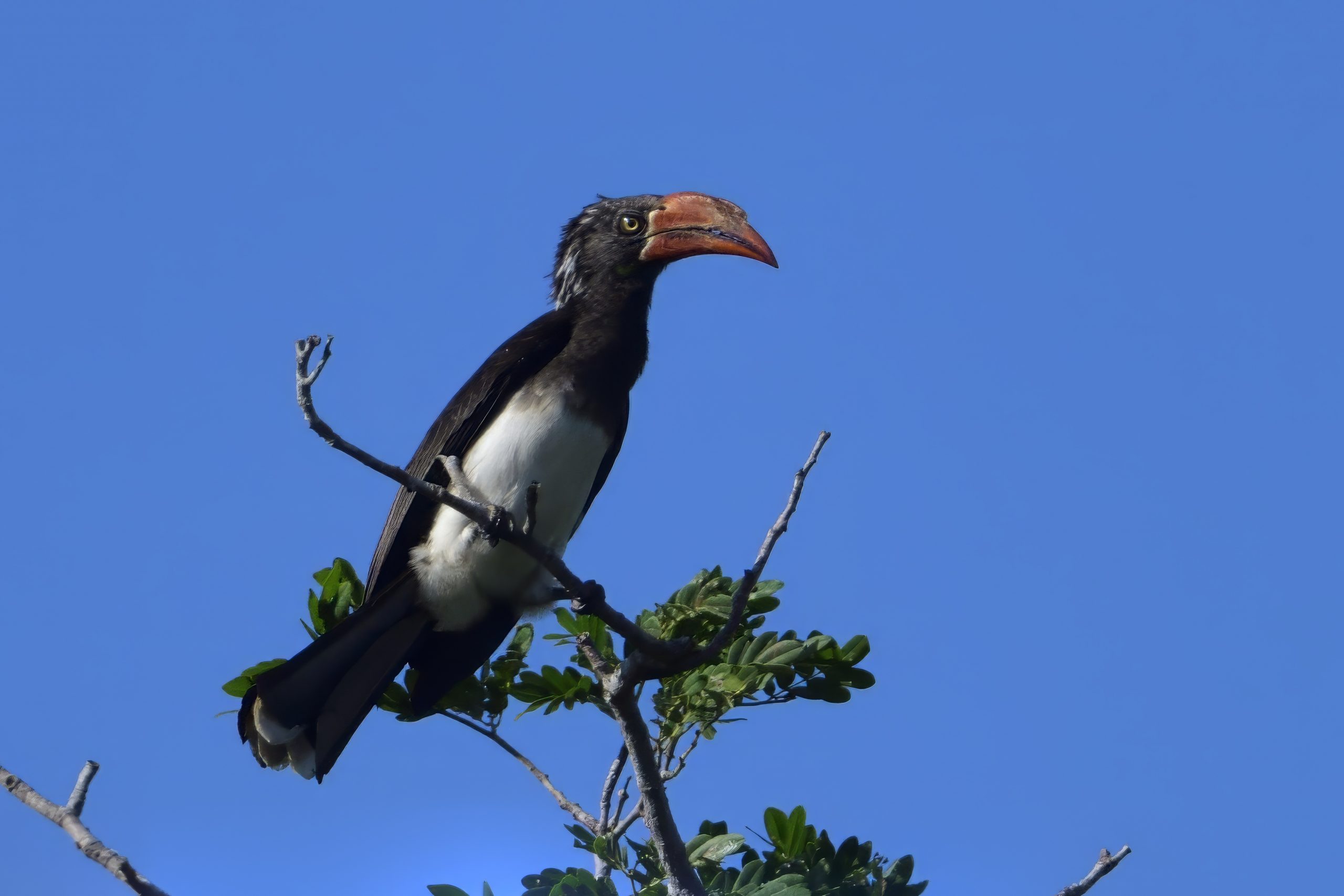
Crowned Hornbill, Lophoceros albotermina
Day 17, Thursday, May 18: Arabuko Forest to Taita Hills
We entered through the main gate and found the following species: Boehm´s Spinetail, Retz´s Helmetshrike, Palm-nut Vulture, Eastern Bronze-naped Pigeon (an extreme observation from a lowland Forest), Sombre Greenbul and Silvery-cheeked Hornbill. We exited the forest and said good bye to Apolloh. He had given us a tip of a short cut to Voi. We turned west at Kilifi and came out on the Mombasa – Nairobi road way north of Mombasa. We still had quite a few kilimeters to Voi in very heavy traffic. Once we turned at Voi, the traffic eased up and we reached our camp in Taita Hills around 15:00. I was totally sick and fatigued and tried to walk in the forest, but had to turn and go back to camp. Here are some of the birds we saw: Stripe-faced Greenbul, Taita White-eye, Evergreen Forest Warbler, Hartlaub´s Turaco, Spot-flanked Barbet, Placid Greenbul and White-starred Robin.
Some pictures from Day 17:

Retz´s Helmetshrike, Prionops retzii
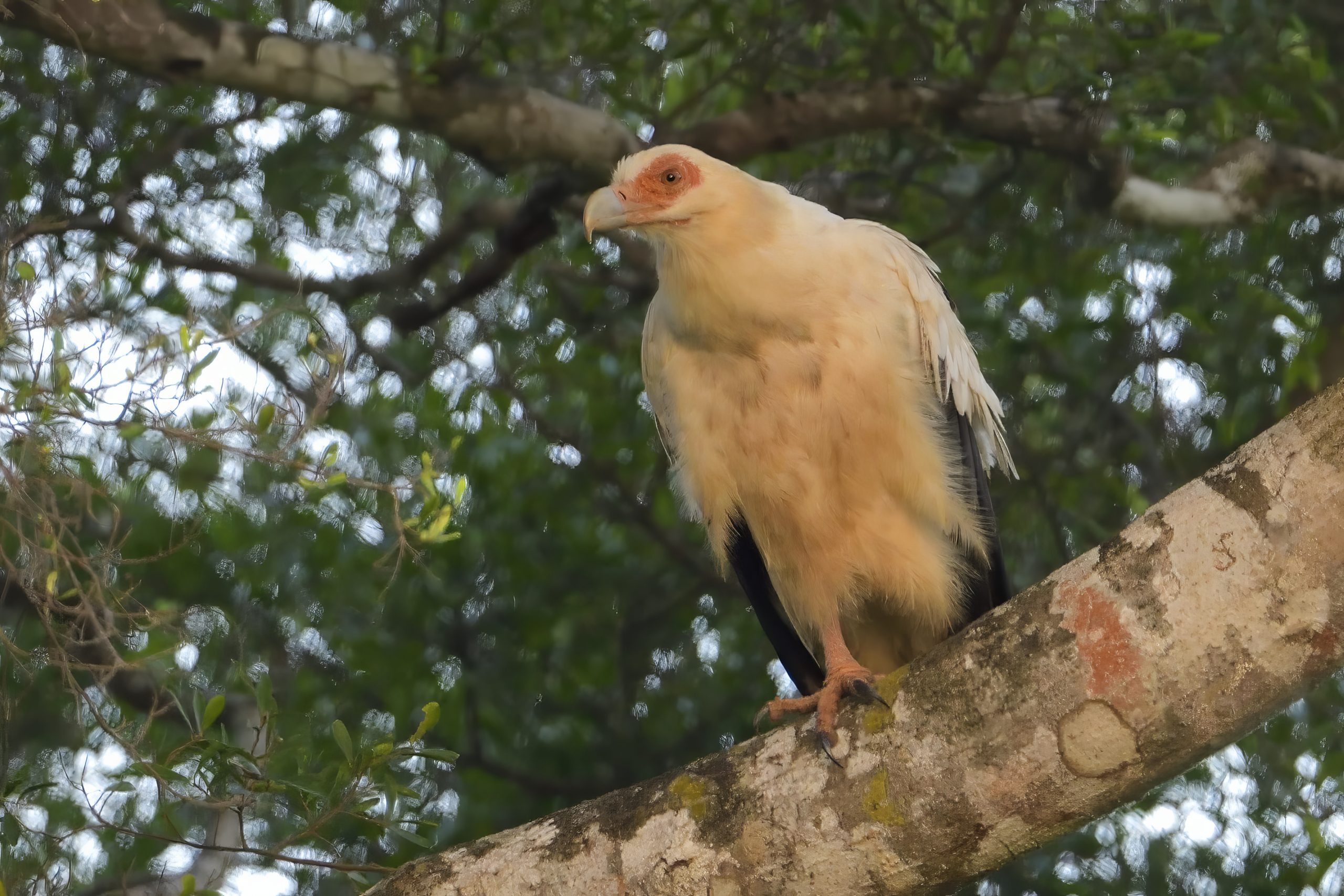
Palm-nut Vulture, Gypohierax angolensis
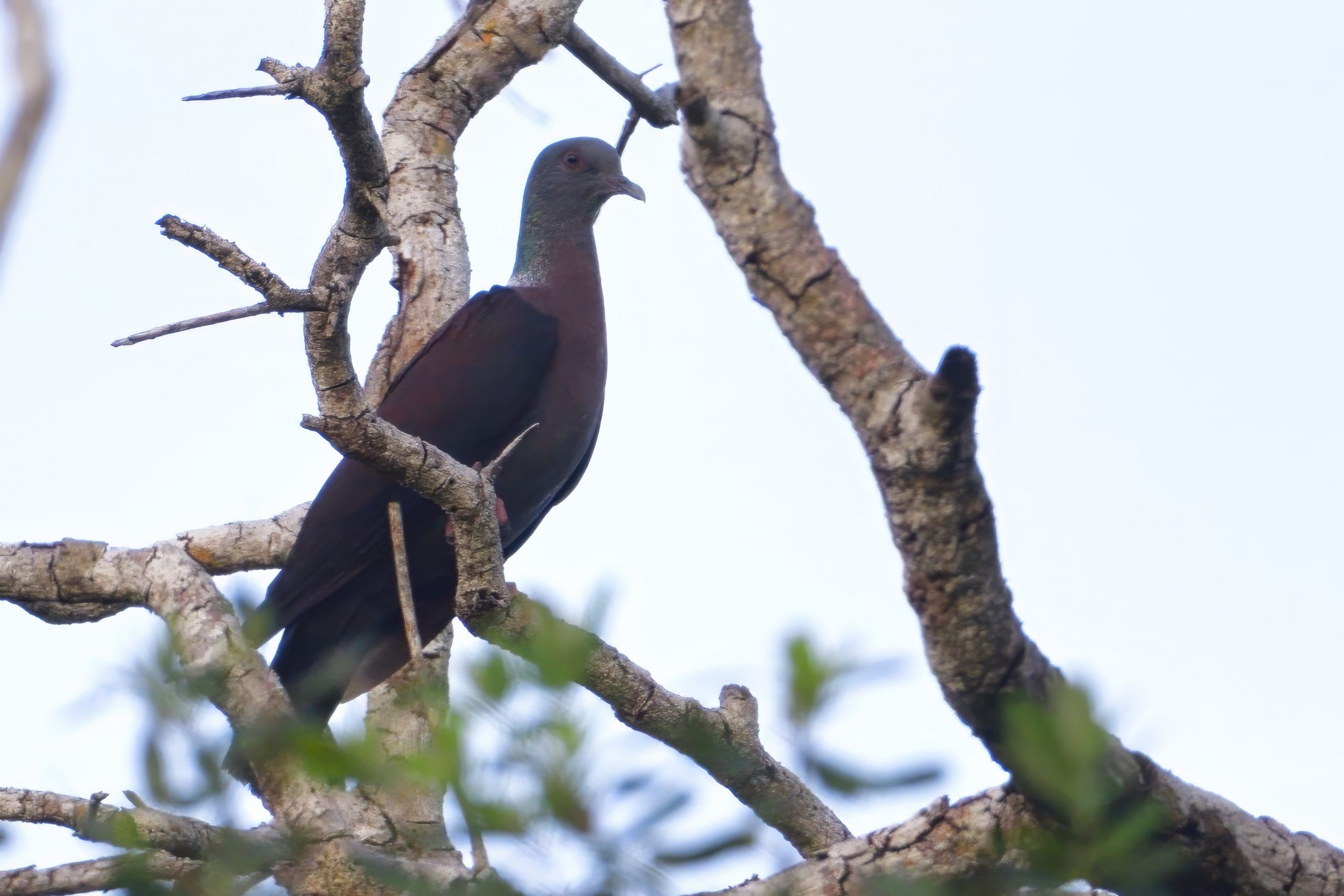
Eastern Bronze-naped Pigeon, Columba delegorguei

Coastal Cisticola, Cisticola haematocephalus, Endemic to Coastal Cisticola
Day 18, Friday, May 19: Taita Hills
I was to weak to go into the forest so Nathanial the guide and my Danish frined went alone. My friend got good recordings of Taita Thrush, they also added Pale Flycatcher and African Dusky Flycatcher before they returned for breakfast. After breakfast, I drove them to the spot for Taita Apalis. I felt very bad and even vomitted so I stayed by the car. Another guide I knew came to where I was sitting in the camping chair. I explained to him that my friend and Nathaniel were in the forest looking for the Taita Apalis. He said he had seen several. I sent him back into the forest and when they emerged my Danish friend had a big smile on his face. They had connected with many Taita Apalises and he had excellent recordings. On the way back to camp we saw White-necked Raven, Rock Martin, Cape Robin-chat, Olive Sunbird, Yellow-throated Woodland Warbler and Augur Buzzard. After lunch, I was still too weak, so the two of them went alone. They found more Taita Thrush and also Usambara Double-collared Sunbird.
We had dinner and we retired early to bed. I told my Danish friend to have his suitcases packed before they went into the forest the next morning.
Day 19, Saturday May 20: Taita Hills – to Home at Kiligolf.
The boys came back from the forest and I had already packed the car. We had breakfast and were soon on our way home. Nothing special to observe through Tsavo West, but we stopped at Taveta to fill up the tank and check the other bodily fluids of My old Land Rover. The border crossing went smooth, but the traffic through Moshi were slow. We arrived home in good time before darkness. Unfortunately, I did not take any pictures in Taita Hills, but I have all the 3 endemic species from there before. My Danish friend took some pictures of birds in my garden before we retired early to bed.
Day 20, Sunday, May 21: Kiligolf to the airport.
We had a late morning my Danish friend took some pictures in my garden. We had breakfast and it were soon time to drive him to the airport.
For my Danish friend the trip were a huge success. He got 3 recordings of Amani Sunbird in Amani, 19 recordings of Tanzanian Illadopsis and one recording of Usambara Hyliota. In Kwamgumi Forest, he got 3 recordings of the Northern race of Swynnerton´s Robin. In Arabuko Sokoke 20 recordings of Amani Sunbird. In Taita hills 9 recordings of Taita Apalis, 17 recordings of Taita Thrush and 10 recordings of Taita White-eye. For the Northern race of Swynnerton´s Robin, no recordings exist on Xeno-canto and for the other targets very few, so he managed to really increase the number of recordings for Xeno-canto except for the Usambara Hyliota, For me this was a very different trip since my Danish friend and his recordings were first priority, I did not manage to do much birding except the very successful day in Dakatcha. My next trip starts on July 12, stay tuned for an update. Then I have trips in August (3 weeks), September, October and November. December is still free. For 2025 I already have 4 bookings. I have now seen 1136 species in East Africa and have pictures of 1089.